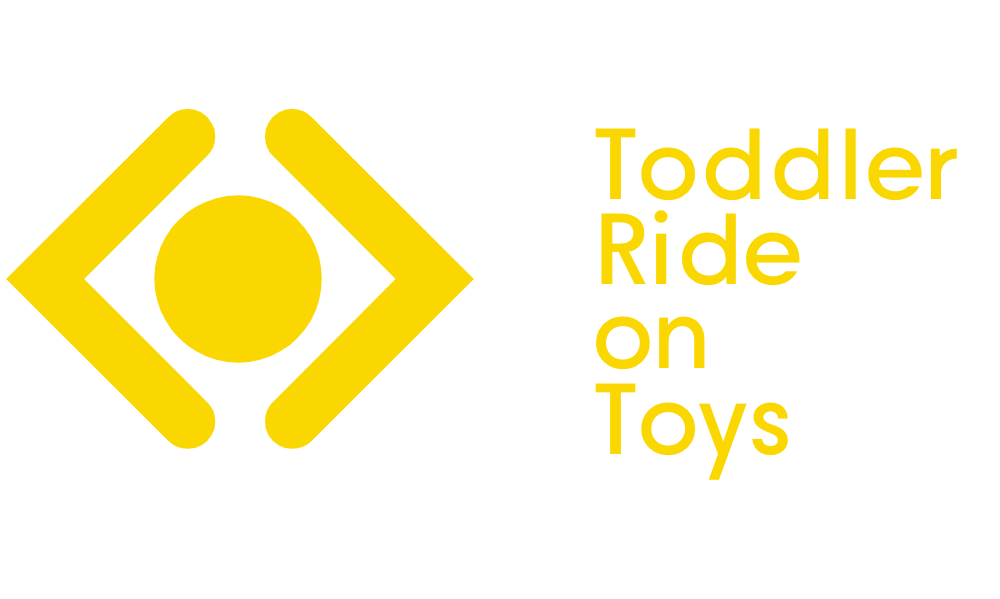Waldorf Toys
What Are Waldorf Toys
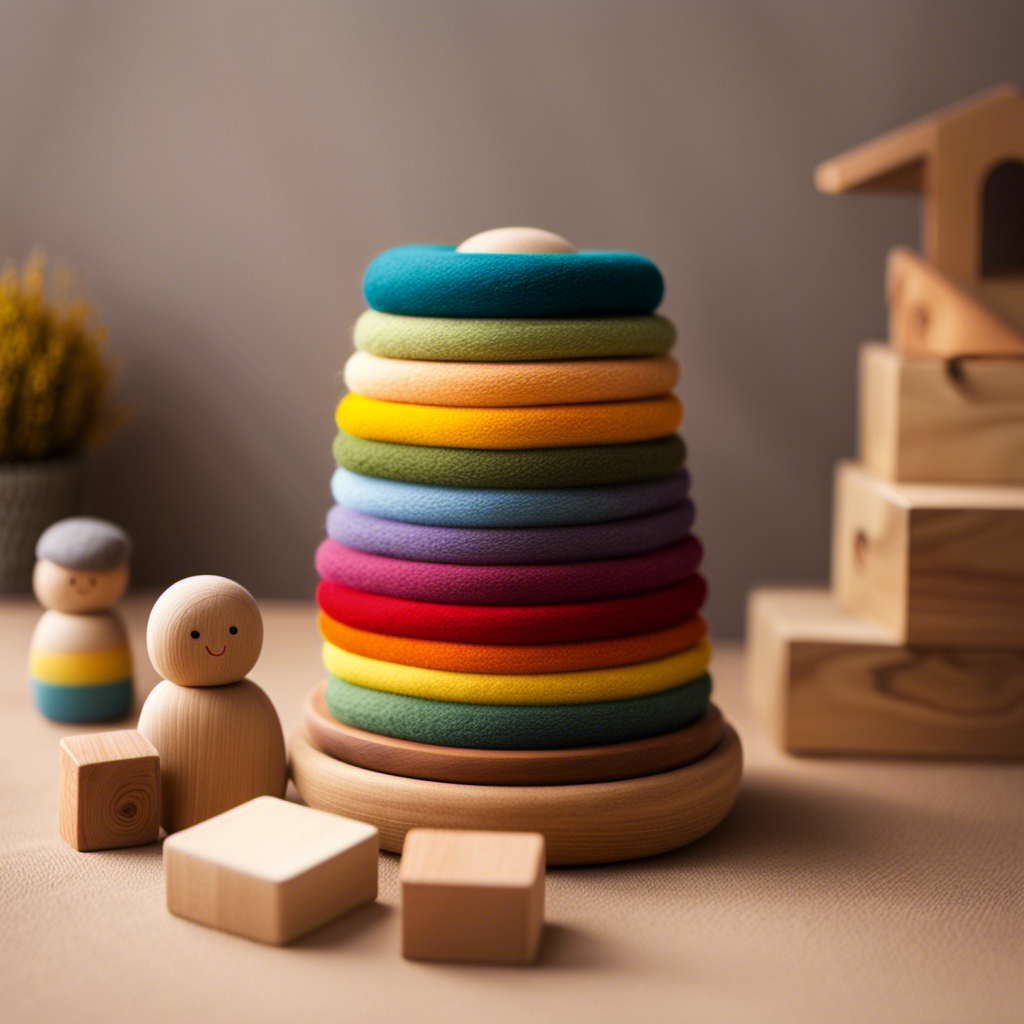
As a parent, my goal is to provide my child with toys that are not only entertaining, but also promote their development. This is why I was intrigued when I discovered Waldorf toys.
But what exactly are Waldorf toys? In this article, I will delve into the history, principles, benefits, and characteristics of Waldorf toys.
I will also explore how these toys can be used for developmental milestones and incorporated into early childhood education.
Join me as we discover the wonders of Waldorf toys together.
Key Takeaways
- Waldorf toys have a rich history and are rooted in the principles of the Waldorf education system.
- Waldorf toys are designed to foster imagination, creativity, and sensory exploration in children.
- Waldorf toys promote open-ended play, allowing children to use their imagination and creativity to play in various ways.
- Parents and educators can choose from a variety of Waldorf toys or even create their own DIY Waldorf toys to cater to their child’s developmental needs.
History of Waldorf Toys
You might be interested to know that Waldorf toys have a rich history. These toys are inspired by the educational philosophy of Rudolf Steiner, an Austrian philosopher, and they have been around for nearly a century.
The history of Waldorf toys can be traced back to the early 20th century when Steiner founded the first Waldorf school in Germany. He believed that children should have toys that stimulate their imagination and creativity, and that play is an essential part of their development.
The importance of play in child development cannot be overstated. It is through play that children learn about the world around them, develop their cognitive and social skills, and explore their own interests and abilities. Waldorf toys are designed with these principles in mind.
They are made from natural materials such as wood, wool, and cotton, and they are often simple in design, allowing children to use their imagination and create their own stories and scenarios.
Transitioning into the subsequent section about the principles behind Waldorf toys, it is important to understand that these toys are not just playthings, but tools for fostering creativity, imagination, and holistic development in children.
Principles Behind Waldorf Toys
When it comes to Waldorf toys, there are several key points to consider.
First, the educational benefits of these toys are well-documented, as they encourage open-ended play and allow children to explore their creativity and problem-solving skills.
Additionally, Waldorf toys promote imaginative play by providing simple, natural materials that can be transformed into anything a child can imagine.
Educational Benefits Explained
Explore the educational benefits of Waldorf toys and discover how they promote holistic learning.
-
The benefits of hands-on learning: Waldorf toys encourage children to actively engage with their environment, using their hands and senses to explore and manipulate objects. This hands-on approach enhances their cognitive development, as they learn through direct experience and experimentation.
-
Fostering social skills: Waldorf toys often promote cooperative play and encourage children to interact with others. Through collaborative activities, such as building blocks or imaginative play, children develop important social skills like sharing, communication, and problem-solving. These experiences help them build relationships and develop empathy towards others.
-
Enhancing creativity and imagination: Waldorf toys are designed to be open-ended and encourage children to use their imagination. Whether it’s building a fort with wooden blocks or creating stories with dolls, these toys stimulate creativity and allow children to express themselves freely.
By promoting hands-on learning, fostering social skills, and enhancing creativity, Waldorf toys provide a well-rounded educational experience for children.
Moving forward, let’s dive into how these toys promote imaginative play.
Promotes Imaginative Play
Imaginative play is encouraged through open-ended activities and allows for self-expression and creative thinking. Waldorf toys are designed to promote this type of play, leading to numerous benefits for children’s cognitive development. When children engage in imaginative play, they have the opportunity to explore different roles, scenarios, and emotions, fostering their social and emotional skills. Additionally, it stimulates their problem-solving abilities, as they come up with creative solutions to challenges that arise during play.
Waldorf toys are known for their simplicity and natural materials, which further enhance the imaginative play experience. These toys often have minimal detailing, allowing children to use their imagination to fill in the details. They are made from natural and sustainable materials such as wood, cotton, and wool, providing a sensory-rich play experience that is safe and environmentally friendly.
Transition: Now that we understand how imaginative play benefits children, let’s explore how Waldorf toys specifically incorporate natural and sustainable materials.
Natural and Sustainable Materials
You’ll love how the natural and sustainable materials used in these toys contribute to a sensory-rich play experience. Waldorf toys are crafted with a focus on using natural materials such as wood, cotton, and wool. These materials not only provide a tactile and visually pleasing experience for children, but they also have a positive impact on the environment.
Here are three key points about the use of natural materials in Waldorf toys:
-
Wood: The use of natural wood in Waldorf toys provides a warm and organic feel. It is durable, non-toxic, and allows for a variety of textures and shapes to stimulate a child’s senses.
-
Cotton: Soft cotton fabrics are often used in Waldorf dolls and stuffed animals, providing a comforting and huggable experience. The natural fibers are gentle on the skin and free from harmful chemicals.
-
Wool: Wool is commonly used in Waldorf toys for its natural warmth and softness. It has unique properties that regulate body temperature and provide a cozy sensation.
By incorporating these natural materials, Waldorf toys not only create a sensory-rich play experience but also promote sustainability and environmental consciousness. It’s fascinating to see how these choices can positively impact a child’s playtime.
Moving on to the benefits of Waldorf toys, let’s explore how they foster imagination and creativity.
Benefits of Waldorf Toys
When it comes to the benefits of open-ended play, imagination and creativity are key factors that come into play.
Open-ended play allows children to think outside the box, explore their own ideas, and make their own decisions.
This type of play fosters imagination and creativity by encouraging children to use their minds to create and innovate, leading to endless possibilities and a deeper sense of engagement with their play.
Open-Ended Play Benefits
To fully appreciate the benefits of open-ended play, try incorporating Waldorf toys into your child’s playtime routine.
Open-ended play allows children to explore and create without limitations, fostering their imagination and creativity. When children engage in open-ended play, they are given the freedom to think critically, problem-solve, and develop their own unique ideas.
Waldorf toys, with their simple and natural designs, are perfect for encouraging open-ended play. These toys are made from natural materials like wood and cloth, providing a sensory experience that stimulates a child’s imagination. They also promote open-ended play by lacking specific instructions or predetermined outcomes. Instead, children are free to use the toys in various ways, allowing them to fully express their creativity and engage in imaginative play.
Transitioning into the next section, imagination and creativity are crucial for a child’s cognitive and emotional development.
Imagination and Creativity
Imagination and creativity are essential for fostering your child’s cognitive and emotional development. Engaging in imaginative play allows children to explore, create, and express themselves in unique ways. This type of play not only brings joy and entertainment, but also provides numerous benefits for their overall development.
Imagination and creativity encourage problem-solving skills, as children learn to think outside the box and find creative solutions. It enhances their flexibility and adaptability, as they can easily switch between different roles and scenarios. Imaginative play also promotes language development, as children often engage in storytelling and role-playing, expanding their vocabulary and communication skills.
Furthermore, imaginative play nurtures emotional intelligence, as children explore different emotions and learn to empathize with others. It encourages social interaction and cooperation, as they collaborate with their peers to create imaginative worlds and scenarios.
Transitioning into the subsequent section about ‘characteristics of Waldorf toys,’ the benefits of imaginative play can be further enhanced with toys that stimulate and support children’s creativity and imagination.
Characteristics of Waldorf Toys
You’ll notice that Waldorf toys are known for their natural materials and simple designs. These characteristics are intentional and serve to promote creative thinking and foster open-ended play. By using materials such as wood, silk, and cotton, Waldorf toys provide a sensory experience that stimulates the imagination. The simplicity of their designs allows children to use their creativity to transform these toys into whatever their imagination desires.
In fact, Waldorf toys are carefully crafted to encourage children to think outside the box and explore different possibilities. They are intentionally designed without a specific purpose or predetermined outcome, which allows children to engage in open-ended play. This type of play encourages problem-solving skills, critical thinking, and decision-making abilities. It also nurtures a sense of independence and self-confidence as children are free to explore and create without limitations.
To further illustrate the characteristics of Waldorf toys, consider the following table:
| Natural Materials | Simple Designs | Promotes Creative Thinking |
|---|---|---|
| Wood | Minimalistic | Emphasizes Imagination |
| Silk | Uncomplicated | Encourages Open-ended Play |
| Cotton | Timeless | Inspires Problem-solving |
As you can see, Waldorf toys embody the essence of promoting creative thinking and fostering open-ended play. They are designed to provide children with the opportunity to explore their imagination and engage in limitless possibilities.
Now, let’s delve into the different types of Waldorf toys available.
Types of Waldorf Toys
When choosing Waldorf toys, consider the various types available to find the ones that best align with your child’s interests and developmental needs. Waldorf toys are known for their natural materials and focus on open-ended play, which encourages creativity and imagination.
Here are three types of Waldorf toys that are popular among parents and educators:
-
Wooden Toys: Made from sustainably sourced wood, these toys are durable and have a tactile feel. They often come in simple forms, allowing children to use their imagination to transform them into anything they desire.
-
Dolls and Figures: Waldorf dolls and figures are made from natural materials like cotton and wool. They have minimal facial features to encourage children to imagine and project their own emotions onto them. These toys are perfect for role-playing and storytelling.
-
Art Supplies: Waldorf toys often include art supplies like crayons, watercolors, and modeling clay. These materials allow children to express themselves creatively and develop their fine motor skills.
Waldorf toys promote imaginative play by providing children with the tools to create their own worlds and stories. Through open-ended play, children can explore different scenarios, problem-solving, and develop social skills.
How Waldorf Toys Promote Imaginative Play
Art supplies like crayons and clay encourage children to express their creativity and develop fine motor skills. Similarly, Waldorf toys, which are often used in Montessori education, promote imaginative play and have numerous benefits for child development.
Waldorf toys are made from natural materials such as wood, cotton, and wool, which not only provide a sensory experience but also allow children to connect with nature. These toys are designed to be open-ended, meaning that they can be used in a variety of ways and can adapt to a child’s imagination. This type of play encourages problem-solving skills, social interaction, and language development.
Imaginative play with Waldorf toys allows children to explore different roles and scenarios, which enhances their cognitive and emotional development. By engaging in pretend play, children can develop their creativity, empathy, and self-expression. They can also practice decision-making, negotiation, and conflict resolution skills. Additionally, Waldorf toys promote sensory exploration, as they often have different textures, colors, and shapes that stimulate the senses and encourage hands-on learning.
In the next section, we will explore how Waldorf toys can be used to support children’s developmental milestones without following a specific set of steps.
Using Waldorf Toys for Developmental Milestones
When it comes to child development, sensory play is a crucial aspect that offers numerous benefits.
Not only does it engage multiple senses, but it also helps children develop their fine motor skills.
Furthermore, sensory play promotes imaginative play, allowing children to explore and create using their own unique ideas and thoughts.
Benefits of Sensory Play
You can experience the benefits of sensory play through Waldorf toys.
Waldorf toys are designed to promote developmental benefits and encourage sensory exploration in children.
These toys are made from natural materials such as wood and silk, which engage children’s senses of touch, sight, and smell.
By providing different textures and shapes, Waldorf toys stimulate sensory development and encourage children to explore the world around them.
Sensory play not only enhances a child’s cognitive and physical development but also promotes creativity and imagination.
As children manipulate and interact with these toys, they are able to engage their senses and develop important skills such as hand-eye coordination and spatial awareness.
This foundation of sensory exploration lays the groundwork for enhancing fine motor skills, allowing children to further develop their dexterity and precision in future activities.
Enhancing Fine Motor Skills
Enhancing fine motor skills can be achieved through engaging in sensory play activities.
Sensory play, which involves using one or more senses to explore and interact with materials, provides children with valuable opportunities to develop their fine motor skills.
By engaging in activities such as molding playdough, stringing beads, or using tweezers to pick up small objects, children can strengthen the muscles in their hands and fingers, improving their dexterity and coordination.
Additionally, sensory play encourages creativity and imagination.
Through exploring different textures, colors, and shapes, children can enhance their sensory development while also stimulating their creativity.
This combination of sensory exploration and creativity sets the foundation for promoting imaginative play, where children can use their newfound fine motor skills to bring their imaginative worlds to life.
Promoting Imaginative Play
Engaging in sensory play activities can promote imaginative play, allowing children to use their fine motor skills to bring their imaginative worlds to life. Sensory exploration is a crucial aspect of early childhood development, as it helps children to make sense of the world around them and stimulates their creativity.
Open-ended play, where there are no specific rules or outcomes, encourages children to use their imagination and think outside the box. This type of play allows them to explore different textures, sounds, and visual stimuli, which can inspire and enhance their imaginative play.
By incorporating sensory elements into their play, children can create unique stories and scenarios, using their fine motor skills to manipulate objects and bring their imaginative ideas to life.
Transitioning into the subsequent section about incorporating Waldorf toys into early childhood education, it is important to consider how these toys can further enhance imaginative play experiences.
Incorporating Waldorf Toys Into Early Childhood Education
When incorporating Waldorf toys into early childhood education, it’s important to create a hands-on learning environment. These toys are not just playthings, but valuable tools that promote socialization and enhance learning experiences. By incorporating Waldorf toys into special education programs, children with special needs can also benefit from their unique features.
Waldorf toys are designed to stimulate a child’s imagination and creativity. They encourage open-ended play, where children can explore and express themselves freely. Through this process, children learn to socialize, cooperate, and communicate with their peers. Playing with Waldorf toys in a group setting can help children develop important social skills such as sharing, taking turns, and problem-solving.
In special education, incorporating Waldorf toys can be particularly beneficial for children with sensory processing issues or developmental delays. The natural materials used in these toys, such as wood and fabric, provide a sensory-rich experience that can help children regulate their senses and improve their motor skills. Additionally, the simplicity of Waldorf toys allows children to focus on one task at a time, which can be helpful for those with attention difficulties.
Choosing the right Waldorf toy for your child is an essential step in their early education journey.
Choosing the Right Waldorf Toy for Your Child
To choose the right toy for your child, it’s important to consider their interests and developmental needs. When it comes to using Waldorf toys for cognitive development, there are several key benefits to keep in mind.
One of the main advantages of Waldorf toys is that they promote open-ended play. Unlike more traditional toys with a specific purpose or goal, Waldorf toys encourage children to use their imagination and creativity. This type of play allows for greater cognitive development as children learn to problem-solve, think critically, and explore new ideas.
Open-ended play with Waldorf toys also helps develop a child’s social and emotional skills. By engaging in imaginative play, children learn to express their feelings, communicate with others, and negotiate roles and scenarios. This type of play fosters empathy, cooperation, and collaboration, which are essential skills for building relationships and navigating social situations.
Transitioning into the subsequent section about exploring DIY Waldorf toys, it’s important to note that creating your own Waldorf toys can be a rewarding and fulfilling experience. By making toys together with your child, you not only foster their creativity and imagination but also strengthen your bond with them.
Let’s explore some ideas for DIY Waldorf toys that you can enjoy making and playing with your child.
Exploring DIY Waldorf Toys
Now that we have discussed how to choose the right Waldorf toy for your child, let’s dive into the world of DIY Waldorf toys.
Creating your own toys not only allows for personalization but also encourages a sense of creativity and resourcefulness. Here are four wonderful DIY Waldorf toys that can aid in your child’s developmental milestones:
-
Sensory Playdough: Making your own playdough is a fantastic way to engage your child’s senses and promote fine motor skills. You can add natural scents like lavender or chamomile for a calming effect.
-
Nature-inspired Mobile: Gather fallen leaves, twigs, and feathers from your outdoor adventures to create a beautiful mobile. Hang it above your child’s crib or in their play area to stimulate their visual development.
-
Felt Storyboard: Use felt pieces to create characters and objects for storytelling. This DIY toy encourages imagination, language development, and storytelling skills.
-
Rainbow Stacker: Cut out wooden discs in different sizes and paint them in vibrant colors. This DIY stacker enhances hand-eye coordination and color recognition.
Frequently Asked Questions
Are Waldorf Toys Only Suitable for Children of a Certain Age Range?
As a parent, I’ve often wondered if Waldorf toys are only suitable for a specific age range. Well, let me tell you, these toys are like little sparks of magic that ignite a child’s imagination at any age.
They encourage open-ended play and creativity, which is beneficial for child development. Whether your child is a toddler or a pre-teen, Waldorf toys offer endless possibilities for exploration and growth.
Can Waldorf Toys Be Used to Enhance Learning in Specific Subjects, Such as Math or Science?
Using Waldorf toys to teach problem-solving skills and incorporating them into hands-on science experiments can be a great way to enhance learning in subjects like math and science. These toys encourage creativity, imagination, and critical thinking, which are essential skills for problem solving.
Are There Any Safety Concerns or Potential Hazards Associated With Waldorf Toys?
When it comes to Waldorf toys, it’s important to consider any safety concerns or potential hazards. While these toys are known for their natural materials and simple designs, there can still be risks.
For example, small parts can pose a choking hazard for young children. Additionally, some materials used in these toys may not be suitable for children with allergies or sensitivities.
It’s crucial to carefully inspect and choose Waldorf toys that meet safety standards and age appropriateness to ensure a safe play experience.
How Can Parents Encourage Their Child’s Interest in Waldorf Toys and Incorporate Them Into Their Daily Playtime?
Encouraging creativity and incorporating natural materials into daily playtime is essential when introducing children to Waldorf toys.
By providing open-ended toys such as wooden blocks, dolls, and art supplies, parents can inspire imaginative play and foster a child’s curiosity.
Incorporating nature-based elements like silk scarves, shells, or stones can further enhance their sensory experience.
Creating a dedicated space for Waldorf toys and setting aside regular playtime can help establish a routine that encourages exploration, problem-solving, and self-expression.
Are There Any Specific Techniques or Strategies for Maintaining and Cleaning Waldorf Toys to Ensure Their Longevity?
Maintaining and cleaning Waldorf toys is essential to ensure their longevity. Regularly inspect the toys for any damage and repair them as needed.
Use a mild soap and warm water to clean the toys, avoiding harsh chemicals. Allow them to air dry completely before storing them in a clean and dry place.
Consider using natural materials, like cotton or linen, to store the toys, as they allow for proper ventilation.
Implementing these strategies will help preserve the beauty and quality of your Waldorf toys for years to come.
Conclusion
In conclusion, Waldorf toys offer a holistic and developmentally appropriate approach to play and learning. These toys emphasize natural materials, open-ended play, and nurturing imagination. They provide numerous benefits for children’s cognitive, physical, and emotional development.
From wooden blocks to handmade dolls, Waldorf toys encourage creativity, problem-solving skills, and social interaction. If you’re looking for a toy that goes beyond mere entertainment and truly engages your child’s mind and senses, consider incorporating Waldorf toys into their playtime.
Remember, as the saying goes, ‘The proof of the pudding is in the eating.’
Tina is the heart and soul behind Toddler Ride On Toys. With a passion for early childhood education and a deep understanding of child development, Tina ensures that every piece of content on our website reflects our commitment to playful learning. Her expertise in Montessori, Preschool, STEM, and Waldorf education philosophies helps shape our website into a valuable resource for parents, caregivers, and educators.
Waldorf Toys
A Montessori Showcase: Award-Winning Toys for Child-Centered Learning
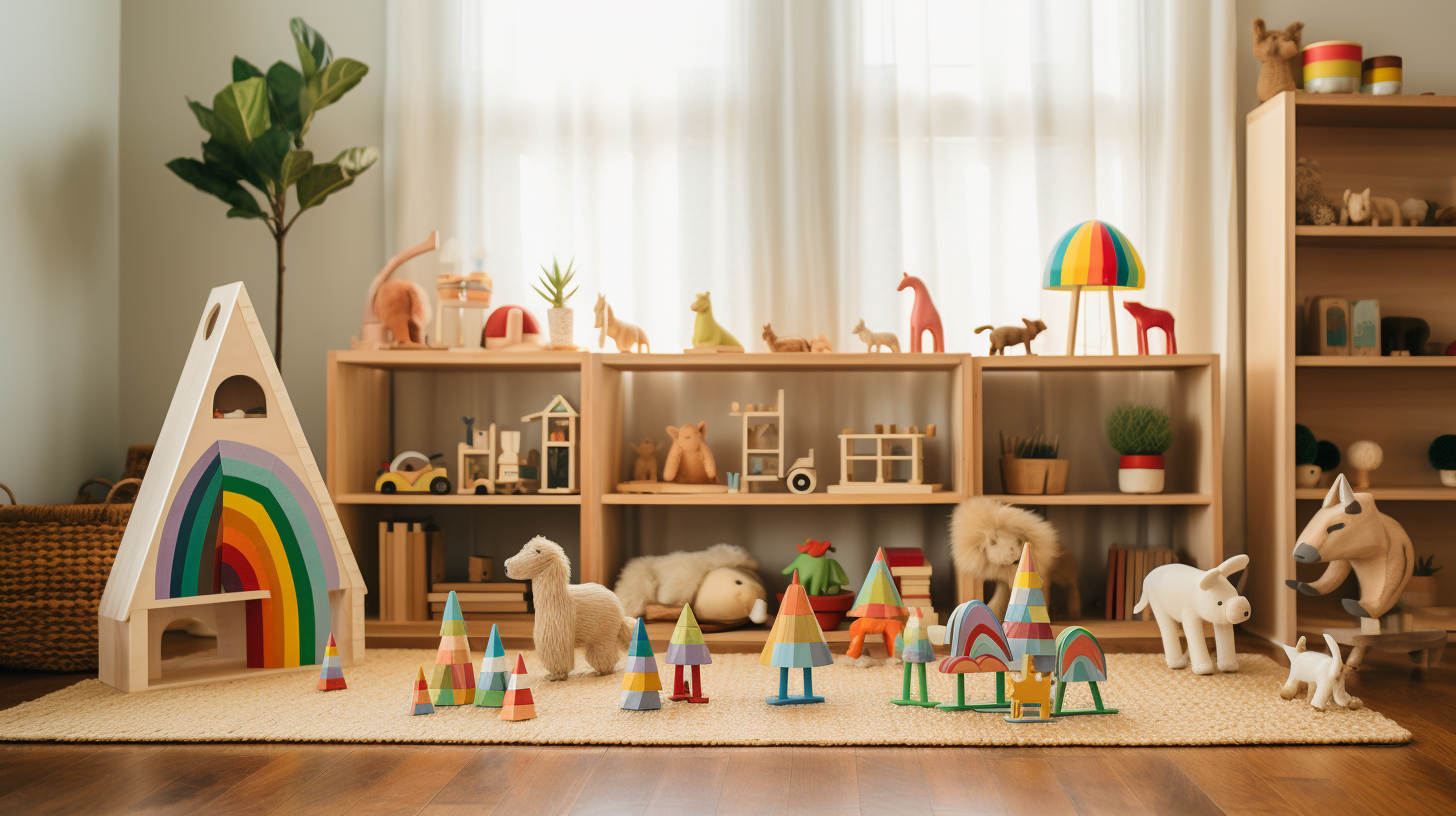
As a parent, my aim is to discover toys that not only captivate my child but also aid in their education and development. Did you know that Montessori-inspired toys have been proven to promote child-focused learning?
In fact, research shows that children who engage with Montessori toys exhibit greater independence and exploration. In this article, I’ll be showcasing award-winning Montessori toys that not only enhance fine motor skills and cognitive abilities but also nurture sensorial and practical life skills.
Join me as we explore the fascinating world of Montessori toys and discover how they can foster a love for learning in your child.
Key Takeaways
- Montessori toys enhance problem-solving skills, creativity, imagination, independence, and self-confidence.
- Independent play boosts creativity, problem-solving skills, emotional resilience, and overall child development.
- Award-winning Montessori toys promote fine motor skills development, dexterity, coordination, and physical movement.
- Montessori toys contribute to cognitive development, including logical reasoning, memory, concentration, problem-solving skills, and critical thinking.
The Benefits of Montessori Toys for Child-Centered Learning
You’ll be amazed by the benefits of Montessori toys for child-centered learning.
Montessori toys play a crucial role in developing problem-solving skills in children. These toys are carefully designed to engage children in hands-on activities that require them to think critically and find solutions to challenges. By playing with Montessori toys, children learn to analyze problems, think creatively, and come up with innovative solutions. This not only enhances their problem-solving abilities but also fosters a sense of independence and self-confidence.
Additionally, Montessori toys promote creativity in children. These toys encourage open-ended play and allow children to explore their imagination and express themselves freely. They provide opportunities for children to engage in pretend play, create their own stories, and develop their artistic skills.
The benefits of Montessori toys extend beyond just learning and can have a lasting impact on a child’s development.
Now let’s explore how Montessori toys encourage independent exploration.
How Montessori Toys Encourage Independent Exploration
Encouraging independent exploration, these toys foster curiosity and self-discovery. As a parent, I have come to appreciate the vital role playtime plays in my child’s development. It’s not just about having fun; it’s about providing them with opportunities to learn and grow. Independent play, in particular, offers numerous benefits that can shape a child’s development in remarkable ways.
Here are three ways independent play can positively impact a child’s development:
- Boosts creativity and imagination: When children have the freedom to explore and play independently, they can tap into their imagination and create their own worlds.
- Builds problem-solving skills: Independent play allows children to overcome challenges on their own, promoting critical thinking and problem-solving abilities.
- Enhances emotional resilience: By engaging in independent play, children learn to regulate their emotions, develop self-confidence, and become more resilient.
As we dive into the next section about award-winning Montessori toys for fine motor skills development, it’s important to understand the role of independent play in setting the stage for optimal learning and growth.
Award-Winning Montessori Toys for Fine Motor Skills Development
When selecting toys for children, it’s important to consider the impact they have on motor skills development.
As a parent, I often look for toys that promote fine motor skills. Some examples include puzzles, building blocks, and threading games.
Research shows that engaging in activities that require hand-eye coordination and precise movements can greatly enhance a child’s motor skills development. This can lead to improved dexterity and coordination.
Toy Selection Criteria
The toy selection criteria includes factors such as safety, durability, and educational value.
When choosing toys for children, it is crucial to prioritize their safety. Look for toys that are made from non-toxic materials and have passed safety regulations. Additionally, consider the age appropriateness of the toys. Each age group has different developmental needs, so choose toys that align with their current abilities.
Durability is also important, as children can be rough with their toys. Investing in well-made toys that can withstand playtime will save you money in the long run.
Lastly, consider the educational value of the toys. Look for toys that promote learning and development in areas such as cognitive, social, emotional, and physical skills.
Impact on Motor Skills
You can enhance your child’s motor skills by selecting toys that provide opportunities for physical movement and coordination. Developing gross motor skills is important for a child’s overall development as it allows them to engage in physical activities, explore their environment, and interact with others.
The benefits of gross motor skills development are numerous. It helps children build strength, balance, and coordination, which are essential for everyday tasks like walking, running, and playing sports. Additionally, it improves their spatial awareness, body control, and overall physical fitness.
By choosing toys that encourage active play, such as bikes, balls, and climbing structures, you can support your child’s motor skill development in a fun and engaging way.
Transitioning into the next section, enhancing cognitive abilities with Montessori toys, we can see how these toys provide a holistic approach to child-centered learning.
Enhancing Cognitive Abilities With Montessori Toys
Using Montessori toys can greatly improve a child’s cognitive abilities. These toys are specifically designed to promote problem-solving skills and critical thinking in children. Here are three ways in which Montessori toys can evoke emotion and enhance cognitive development:
- Encouraging logical reasoning: Montessori toys often involve puzzles, building blocks, and shape sorters that require children to analyze and problem-solve. This helps them develop logical reasoning skills and enhances their ability to think critically.
- Fostering creativity and imagination: Montessori toys, such as open-ended building sets and art materials, allow children to explore their creativity and imagination. This not only engages their cognitive abilities but also evokes a sense of joy and wonder.
- Enhancing memory and concentration: Montessori toys often involve activities that require children to remember patterns, sequences, and rules. By engaging in these activities, children improve their memory and concentration skills, leading to better cognitive development.
By promoting problem-solving skills and critical thinking with Montessori toys, children can develop their cognitive abilities in a fun and engaging way.
Now, let’s explore how Montessori toys can also contribute to sensorial development.
Montessori Toys for Sensorial Development
In my exploration of Montessori toys, I have come across an important aspect of child development: sensory exploration. Montessori toys are designed to engage a child’s senses and provide opportunities for them to explore and learn through touch, sight, sound, and even smell.
This type of sensory play has numerous benefits for children. It helps them develop their fine motor skills, hand-eye coordination, and spatial awareness. It also stimulates their creativity and imagination, as they are encouraged to use their senses to explore and discover new things.
By engaging in sensory play, children are able to foster their creativity and develop a deeper understanding of the world around them.
Now, let’s dive into the role of Montessori toys in language acquisition.
The Role of Montessori Toys in Language Acquisition
Let’s explore how Montessori toys can play a pivotal role in helping your child acquire language skills.
Play is an essential component of language development, and Montessori toys provide the perfect platform for this. Through hands-on learning, children engage their senses, which in turn enhances their language acquisition. Montessori toys encourage exploration, problem-solving, and creativity, all of which are crucial for language development.
For example, building blocks can help children learn new words like ‘tower’ or ‘balance,’ while puzzles can introduce them to shapes and colors. By actively engaging with these toys, children not only expand their vocabulary but also develop their communication and cognitive skills.
Transitioning into the next section, Montessori toys also promote social skills through collaborative play and interaction with others.
Promoting Social Skills Through Montessori Toys
When it comes to Montessori toys, they offer numerous benefits for child development. They also play a crucial role in promoting social skills. Research has shown that these toys encourage cooperative play, turn-taking, and sharing. These are essential skills for building positive social interactions. By engaging in open-ended play with Montessori toys, children have the opportunity to learn and practice important social skills in a fun and interactive way.
Montessori Toy Benefits
Explore the benefits of Montessori toys and how they can enhance your child’s learning experience. Montessori toys are designed to promote hands-on learning and foster a child’s independence and creativity. Here are five reasons why Montessori toys are a valuable addition to your child’s playtime:
- Encourages self-directed learning: Montessori toys empower children to explore and discover at their own pace, promoting a love for learning.
- Develops fine motor skills: These toys often involve activities that require precise movements, helping children refine their hand-eye coordination and dexterity.
- Enhances problem-solving abilities: Montessori toys are designed to challenge children and encourage critical thinking, allowing them to develop problem-solving skills.
- Fosters concentration and focus: The engaging nature of Montessori toys helps children concentrate for longer periods, enhancing their ability to focus on tasks.
- Promotes independence: These toys provide opportunities for children to practice skills independently, boosting their confidence and self-esteem.
By incorporating Montessori toys into your child’s playtime, you can create an environment that promotes learning and nurtures their development.
Now, let’s explore how Montessori toys can also support the development of crucial social skills.
Social Skills Development
In addition to the cognitive benefits, Montessori toys also play a crucial role in the development of social skills in children. Through the use of these toys, children have the opportunity to engage in cooperative play and learn important lessons about empathy and problem-solving.
Empathy building is a key aspect of Montessori education, and the toys designed for this purpose encourage children to understand and share the feelings of others. For example, dolls with interchangeable emotions help children recognize and express different emotions, fostering empathy and emotional intelligence.
Problem-solving skills are also nurtured through Montessori toys. Many of these toys require children to think critically and find solutions to challenges. Whether it’s completing a puzzle or building a structure, these toys promote problem-solving abilities, logical thinking, and perseverance.
By engaging with these toys, children develop essential social skills and learn how to work collaboratively, communicate effectively, and negotiate with others. These skills are crucial for their overall development and future success.
Transitioning to the subsequent section, let’s now explore Montessori toys that specifically focus on numeracy skills development.
Montessori Toys for Numeracy Skills Development
Montessori toys are effective tools for developing numeracy skills in children. These toys are specifically designed to engage children in learning mathematical concepts through play. Research has shown that children learn best when they are actively involved in hands-on activities, and Montessori toys provide just that.
By manipulating objects, counting, sorting, and matching, children develop their understanding of numbers, quantities, patterns, and basic mathematical operations. These toys not only make learning fun but also help children develop a solid foundation in numeracy. As they play with these toys, children naturally develop their problem-solving and critical thinking skills, which are essential for success in mathematics.
By incorporating Montessori toys into their playtime, parents and educators can support children’s mathematical development and set them on a path to becoming confident and proficient in numeracy skills.
In addition to developing numeracy skills, Montessori toys also stimulate creativity and imagination in children. By providing open-ended and versatile play opportunities, these toys encourage children to explore, create, and think outside the box.
Whether it’s building structures with blocks, designing their own patterns with shape puzzles, or creating their own stories with storytelling sets, children are given the freedom to express their unique ideas and imaginations. This type of play not only enhances children’s creativity but also fosters their problem-solving skills, as they navigate through challenges and come up with innovative solutions.
Stimulating Creativity and Imagination With Montessori Toys
When it comes to open-ended play, there are numerous benefits for children’s development.
Not only does it allow for creativity and imagination to flourish, but it also enhances cognitive development.
Through open-ended play, children engage in sensory exploration, which plays a significant role in their overall growth and learning.
Open-Ended Play Benefits
Explore the benefits of open-ended play, where your child’s imagination can roam free. Open-ended play refers to activities that have no specific rules, structure, or end goal, allowing children to use their creativity and imagination to explore and create. This type of play has numerous benefits for children, promoting their creativity and imagination in unique ways.
Here’s a table that highlights some of the key benefits of open-ended play:
| Benefits of Open-Ended Play |
|---|
| Enhances creativity |
| Stimulates imagination |
| Promotes problem-solving |
| Builds social skills |
| Develops critical thinking |
Through open-ended play, children are able to express themselves freely, think outside the box, and come up with their own solutions to problems. It also encourages social interaction and collaboration, as children engage in imaginative play together. By promoting creativity and imagination, open-ended play sets a strong foundation for enhancing cognitive development in children.
Enhancing Cognitive Development
By engaging in open-ended play, children can enhance their cognitive development in unique and creative ways. Research has shown that toys designed for problem solving can play a significant role in promoting cognitive development through play. These toys often require children to think critically, make decisions, and find solutions to challenges. They encourage the development of problem-solving skills, logical thinking, and reasoning abilities.
For example, puzzles help children develop their spatial awareness and improve their ability to analyze and solve problems. Building blocks promote creativity and spatial thinking, as children experiment with different structures and designs. By engaging with these toys, children are actively involved in their learning process, which enhances their cognitive development.
As children explore and interact with their environment, they also engage their senses, which further supports their cognitive growth. This sensory exploration plays a crucial role in their overall development and will be discussed in the next section.
Role of Sensory Exploration
Engaging in sensory exploration is an essential aspect of children’s cognitive development. Research has shown that when children use their senses to explore the world around them, it stimulates their brain and helps them make sense of their environment. Sensory exploration benefits children in many ways.
It enhances their language development by allowing them to associate words with the things they see, hear, smell, taste, and touch. It also promotes problem-solving skills, as children learn to use their senses to gather information and make decisions. Furthermore, sensory exploration is important for hands-on learning. By engaging in activities that involve their senses, children can develop a deeper understanding of concepts and retain information more effectively.
With this in mind, let’s move on to exploring Montessori toys for practical life skills.
Transitioning to Montessori toys for practical life skills, we can further enhance children’s sensory exploration and hands-on learning.
Montessori Toys for Practical Life Skills
You’ll love how Montessori toys for practical life skills foster independence and confidence in children.
Practical life activities are an essential part of the Montessori curriculum, as they provide children with the necessary skills to take care of themselves and their environment. These activities include tasks such as pouring, buttoning, sweeping, and folding.
Montessori toys designed for practical life skills are specifically created to be child-sized and functional, allowing children to engage in hands-on learning experiences. By participating in these activities, children develop their fine motor skills, hand-eye coordination, and concentration.
Additionally, these toys promote independence and self-confidence as children learn to complete tasks on their own. As children gain mastery over these skills, they become more confident in their abilities and are motivated to explore and learn in other areas.
How Montessori Toys Foster a Love for Learning
Now that we’ve discussed Montessori toys for practical life skills, let’s explore how these toys can foster a love for learning.
Montessori toys are specifically designed to promote curiosity and independence in children. By providing open-ended materials and activities, these toys encourage children to explore, experiment, and discover on their own.
When children are given the freedom to choose their own activities and manipulate the materials, they become active participants in their own learning process. This sense of autonomy and control over their learning experiences instills a sense of ownership and excitement, making learning enjoyable and engaging.
By fostering independence, Montessori toys also help children develop important skills such as problem-solving, critical thinking, and decision-making. As they navigate through various challenges and explore different possibilities, children gain confidence in their abilities and develop a lifelong love for learning.
Now, let’s move on to the next section, where we will explore Montessori toys that support emotional development.
Montessori Toys That Support Emotional Development
When it comes to supporting emotional development, these toys provide a safe and nurturing environment for your child to explore and express their feelings. Montessori toys are designed to promote emotional intelligence and foster self-expression.
Here are five examples of how these toys can support your child’s emotional development:
- Dolls and stuffed animals: These toys encourage nurturing and empathy, allowing your child to practice caring for others.
- Puzzles and building blocks: These toys promote problem-solving skills and resilience, teaching your child to persevere through challenges.
- Art supplies and musical instruments: These toys offer a creative outlet for self-expression, allowing your child to communicate their emotions through art and music.
- Sensory toys: These toys engage your child’s senses, helping them regulate their emotions and develop mindfulness.
- Emotional intelligence games: These toys provide opportunities for your child to learn about emotions, empathy, and social interactions.
Now that we understand how Montessori toys support emotional development, let’s explore how to choose the right toys for your child.
Choosing the Right Montessori Toys for Your Child
To find the right toys for your child’s emotional development, consider their interests and preferences. It’s important to choose toys that not only engage them but also encourage problem-solving skills. Montessori toys are designed to promote independent thinking and problem-solving abilities.
Here are some toy selection tips to keep in mind:
- Opt for open-ended toys: Toys that can be used in multiple ways allow children to explore their creativity and problem-solving skills.
- Look for toys that require problem-solving: Puzzles, building blocks, and shape sorters are great options to enhance problem-solving skills.
- Consider sensory toys: Toys that engage multiple senses, such as textured balls or musical instruments, help children develop problem-solving skills while exploring different sensory experiences.
Frequently Asked Questions
How Do Montessori Toys Benefit Child-Centered Learning?
Montessori toys benefit child-centered learning by promoting independent exploration. They provide opportunities for hands-on learning, problem-solving, and creativity. These toys encourage self-directed play, fostering a love for learning and enhancing cognitive, motor, and social-emotional development.
What Are Some Examples of Montessori Toys That Promote Independent Exploration?
Some examples of Montessori toys that promote independent exploration are stacking blocks, shape sorters, and puzzles. These toys encourage children to problem solve, develop fine motor skills, and build confidence in their abilities.
Which Montessori Toys Are Best for Developing Fine Motor Skills?
When it comes to developing fine motor skills, the best Montessori toys are ones that encourage manipulation and precision. Activities like threading beads, using tweezers, and building with blocks are great for fine motor development.
Can You Recommend Montessori Toys That Enhance Cognitive Abilities?
Sure! Montessori toys are great for enhancing cognitive abilities through educational play. They encourage independent thinking, fine motor skills, and sensory exploration. Child-centered learning is at the heart of these award-winning toys.
How Do Montessori Toys Support Sensorial Development?
Montessori toys promote sensory development by providing opportunities for independent exploration. They engage the senses, helping children refine their perception of textures, shapes, sounds, and colors. Through hands-on play, children develop fine motor skills and enhance their cognitive abilities.
Conclusion
In conclusion, Montessori toys are highly beneficial for child-centered learning. They encourage independent exploration, enhance cognitive abilities, and develop fine motor skills and sensorial awareness.
Some may argue that these toys are expensive, but the long-term benefits they offer outweigh the initial cost. Investing in Montessori toys is like investing in your child’s future.
With a wide range of award-winning options available, you can choose the right toys that cater to your child’s specific needs and interests.
So why wait? Start fostering a love for learning and supporting your child’s holistic development with Montessori toys today.
Mila, a gifted writer with a heart brimming with enthusiasm for child development and playful learning, is the creative force behind the enchanting narratives and insightful articles that grace Toddler Ride On Toys. With a background in early childhood education and a genuine passion for nurturing young minds, Mila weaves words that captivate, educate, and inspire parents, caregivers, and educators.
Waldorf Toys
Reach New Heights: The Best Montessori Climbing Toys for Active Kids
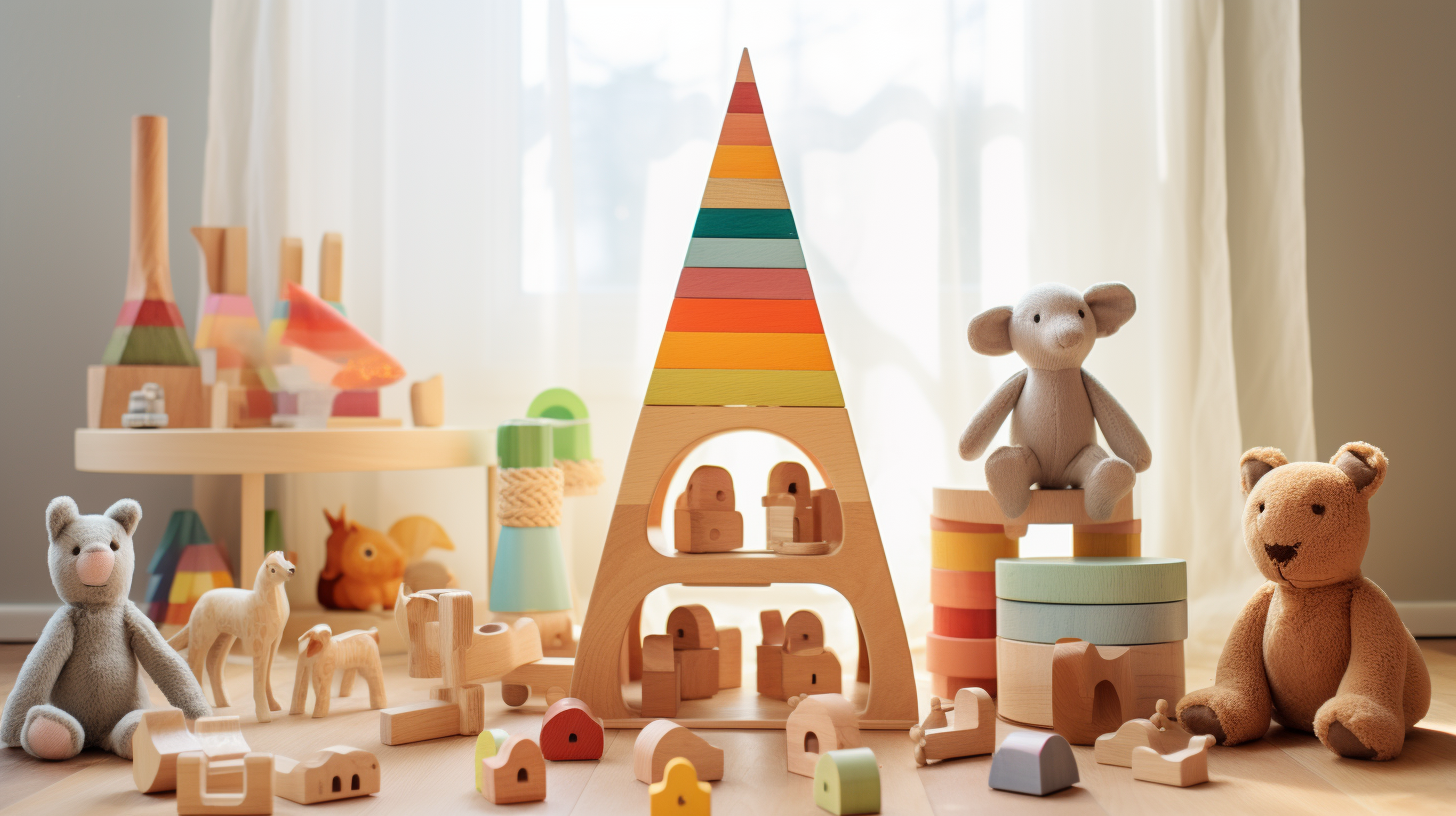
I’ve always been fascinated by how children learn and grow through play. Did you know that participating in active play is essential for a child’s development? Research shows that toys made for climbing can improve motor skills, encourage sensory development, and enhance overall physical health.
In this article, I’ll be sharing the best Montessori climbing toys for active kids. Whether you’re a parent or educator, you’ll find valuable information on choosing the right toy, safety tips, and even budget-friendly DIY options.
Let’s help our little ones reach new heights of learning and fun!
Key Takeaways
- Montessori climbing toys enhance motor skills, promote sensory development, improve overall physical fitness, and provide an opportunity to explore the environment.
- When choosing a climbing toy, consider the child’s age, physical abilities, and interests. Look for low heights and wide bases for stability, and choose toys with soft padding for safety.
- Safety considerations for climbers include choosing age-appropriate toys, following weight limits, teaching proper climbing technique, prioritizing safety through supervision, and regularly inspecting for wear and tear.
- Popular climbing toy options include Little Tikes, Step2, Eezy Peezy, and Simplay3, with considerations for indoor or outdoor options based on available space and weather conditions.
Benefits of Montessori Climbing Toys
One of the benefits of Montessori climbing toys is that they promote physical development in active kids. These toys are designed to improve balance and enhance physical fitness in children.
According to research, engaging in climbing activities helps children develop their gross motor skills, coordination, and strength. As they navigate through the climbing structures, kids are challenged to use their muscles, improving their overall physical fitness.
Additionally, climbing toys provide an opportunity for children to explore their environment and build confidence in their abilities. They learn to assess risks and make decisions, which contributes to their cognitive development as well.
By incorporating Montessori climbing toys into playtime, parents can support their child’s physical and cognitive growth.
Now, let’s explore how to choose the right climbing toy for your child’s needs and preferences.
How to Choose the Right Climbing Toy for Your Child
When choosing the right climbing toy for your child, it’s important to consider their age, physical abilities, and interests. Age appropriate climbing toys can provide your child with endless fun and help them develop important skills.
For younger children, look for climbing toys that have low heights and wide bases for stability. These toys should also have soft padding to ensure safety during play.
As your child grows older and gains more strength and coordination, you can consider climbing toys with higher heights and more challenging elements. It’s also beneficial to choose climbing toys that align with your child’s interests, whether it’s jungle-themed playsets or rock climbing walls.
By selecting the right climbing toy, you can encourage your child’s physical development and keep them engaged in active play.
Now, let’s explore the top Montessori climbing toys for toddlers.
Top Montessori Climbing Toys for Toddlers
When it comes to climbing, there are many benefits for children, both physical and cognitive. Climbing helps develop their gross motor skills, strength, and coordination, while also promoting problem-solving and spatial awareness.
However, safety is a crucial consideration for climbers, and it’s important to choose climbing toys that are age-appropriate, sturdy, and have safety features such as non-slip surfaces and stable bases.
Some popular climbing toy options for children include climbing domes, rock walls, and ladder structures, which provide a challenging yet safe environment for them to explore and grow.
Benefits of Climbing
Discover the numerous benefits of climbing with these Montessori climbing toys – you’ll be amazed at how it promotes physical fitness, cognitive development, and confidence in your active child.
Climbing engages multiple muscle groups, helping your child build strength, balance, and coordination. As they navigate the climbing structures, they develop their gross motor skills and improve their spatial awareness. This physical activity also helps to release pent-up energy and improve overall fitness levels.
Climbing challenges the mind as well, as children plan their movements, assess risks, and problem-solve. It enhances their cognitive development by boosting their concentration, focus, and decision-making skills.
Additionally, climbing builds confidence as children overcome obstacles and achieve new heights.
As we explore the benefits of climbing, it’s important to consider the safety considerations for climbers, ensuring a safe and enjoyable experience.
Safety Considerations for Climbers
It’s important to consider safety measures when engaging in climbing activities. For children, safety should always be a top priority.
When it comes to climbing toys, it’s crucial to ensure that they are appropriate for your child’s age and weight. Each climbing toy has weight limits specified by the manufacturer, and it’s essential to adhere to these limits to prevent accidents or injuries.
Additionally, teaching children the proper climbing technique is necessary to minimize the risk of falls. Encourage them to use their hands and feet to maintain balance and grip, and always remind them to climb slowly and cautiously.
By following these safety measures, children can enjoy the benefits of climbing while staying safe.
Now, let’s explore some popular climbing toy options that are perfect for active kids.
Popular Climbing Toy Options
As we consider the best climbing toys for active kids, it’s important to explore popular climbing toy options. There are various climbing toy brands available in the market, offering a range of choices for children to explore and play. Here are some popular options to consider:
-
Little Tikes: Known for their durable and safe climbing toys, Little Tikes offers a variety of options for both indoor and outdoor play.
-
Step2: Step2 is another well-known brand that provides sturdy and innovative climbing toys for children of different ages.
-
Eezy Peezy: Eezy Peezy specializes in colorful and easy-to-assemble climbing structures that are suitable for both indoor and outdoor use.
-
Simplay3: Simplay3 offers versatile climbing toys that are designed to promote active play while ensuring safety.
When it comes to choosing between indoor and outdoor climbing toys, it depends on factors like available space and weather conditions. Indoor climbing toys are great for year-round play, while outdoor climbing toys provide a chance for children to engage with nature and enjoy fresh air.
Now, let’s explore the best climbing toys for preschoolers.
Best Climbing Toys for Preschoolers
Preschoolers can have a blast with the best climbing toys available. Climbing toys for toddlers not only provide endless fun but also promote physical development and gross motor skills.
When it comes to indoor climbing toys, there are several options to choose from. One popular choice is a climbing triangle, which offers a variety of climbing challenges and helps improve balance and coordination.
Another great option is a climbing dome, which allows children to climb, crawl, and explore different ways to move their bodies.
Lastly, a climbing wall is a fantastic addition to any playroom, offering multiple climbing routes and opportunities for imaginative play.
These climbing toys provide a safe and engaging way for preschoolers to burn off energy and develop their physical abilities.
Transitioning into the subsequent section about Montessori climbing toys for indoor play, let’s explore how these toys can enhance a child’s learning experience.
Montessori Climbing Toys for Indoor Play
When looking for options to enhance indoor play, parents can consider Montessori climbing toys. These toys provide a safe and engaging environment for children to develop their gross motor skills and build strength. Montessori climbing toys are designed to be used indoors and are perfect for small spaces. They come in a variety of sizes and styles, such as climbing triangles, ramps, and cubes. These toys are made with sturdy materials and are built to withstand the active play of children. Not only do they provide physical benefits, but they also promote cognitive and social development. Montessori climbing toys encourage problem-solving, creativity, and cooperation among children. With these indoor climbing toys, children can have fun while staying active and engaged, even when they are indoors.
Transitioning to outdoor climbing toys for active kids, let’s explore the options available for children to continue their active play in the great outdoors.
Outdoor Climbing Toys for Active Kids
Looking for options to keep your children active and engaged outdoors? Transition to outdoor climbing toys, which provide a fun and challenging way for kids to continue their active play in the great outdoors.
Outdoor playtime is crucial for children’s physical development. Here are four reasons why outdoor climbing toys are a great addition to your child’s playtime:
-
Enhances gross motor skills: Climbing requires coordination, balance, and strength, helping children develop their gross motor skills.
-
Boosts problem-solving abilities: Outdoor climbing toys present various challenges that encourage children to think critically and find solutions.
-
Promotes social interaction: Climbing toys often attract multiple children, fostering social skills and cooperation as they take turns and navigate together.
-
Increases confidence and self-esteem: Conquering heights and overcoming obstacles on climbing toys builds confidence and a sense of accomplishment in children.
With so many benefits, it’s important to ensure your child’s safety while using montessori climbing toys. Let’s explore some safety tips to keep in mind.
Safety Tips for Using Montessori Climbing Toys
When it comes to using Montessori climbing toys, it is crucial to prioritize safety. Proper supervision during play is essential to ensure that children are using the equipment correctly and safely.
Additionally, it is important to regularly check and maintain the climbing toys to ensure that they are secure and in good condition for use.
Proper Supervision During Play
Make sure you’re always keeping a close eye on your child while they play with climbing toys. Proper supervision is essential to ensure their safety and prevent accidents. Here are some techniques to help you supervise your child effectively:
-
Stay within arm’s reach: Be physically present near your child while they climb. This allows you to react quickly if they need assistance.
-
Observe their movements: Pay attention to how your child is climbing and assess their skill level. This will help you gauge if they are ready for more challenging climbing toys.
-
Provide guidance and encouragement: Offer verbal cues and positive reinforcement to help your child navigate the climbing toy safely. This will boost their confidence and promote independent play.
By closely supervising your child while they play, you can create a secure environment for them to explore and develop their climbing skills.
Now, let’s move on to ensuring secure climbing equipment without compromising their safety.
Ensuring Secure Climbing Equipment
Now that we understand the importance of supervision during play, let’s talk about the maintenance and safety of climbing toys.
It is crucial to ensure that the climbing equipment is in good condition and regularly inspected for any wear and tear. This includes checking for loose screws, broken parts, or sharp edges. By maintaining the toys properly, we can reduce the risk of accidents and injuries.
Additionally, it is essential to choose age-appropriate climbing toys for our little ones. Each age group has different physical abilities and limitations, so it is crucial to provide them with equipment that is suitable for their developmental stage. This will not only enhance their climbing skills but also keep them safe while having fun.
Now, let’s explore some budget-friendly DIY Montessori climbing toys.
Transition: Now that we know the importance of proper climbing toy maintenance and age-appropriate equipment, let’s discover some DIY Montessori climbing toys for budget-friendly fun.
DIY Montessori Climbing Toys for Budget-Friendly Fun
If you’re looking to have budget-friendly fun, you can easily create your own Montessori climbing toys. Here are four DIY climbing equipment ideas that will provide endless entertainment for active kids:
-
Rope ladder: Tie sturdy ropes to a horizontal bar or tree branch to create a ladder. This will enhance your child’s upper body strength and coordination.
-
Stepping stones: Collect flat rocks or wooden discs and arrange them on the ground in a pattern. This will help develop your child’s balance and spatial awareness.
-
Tire obstacle course: Stack old tires in various formations to create an obstacle course. Your child can climb over them, crawl through them, and jump on them, improving their gross motor skills.
-
Climbing wall: Attach wooden planks or climbing holds to a wall or sturdy structure. This will challenge your child’s strength, problem-solving abilities, and confidence.
By engaging in these budget-friendly climbing options, your child will develop essential motor skills while having a blast.
Transitioning into the next section, let’s explore how Montessori climbing toys can enhance their motor skills even further.
Enhancing Motor Skills With Montessori Climbing Toys
Engaging in these budget-friendly climbing options will help your child develop essential motor skills while having a blast. Climbing is not just a fun activity, but also a great way to improve balance and build strength in young children. As they navigate different climbing challenges, they learn to coordinate their movements, enhancing their overall motor skills.
Climbing helps children develop core muscles, leg strength, and hand-eye coordination. It also promotes body awareness and spatial orientation, as they learn to navigate their way up and down. By engaging in these activities, your child will gain confidence in their physical abilities and develop a strong foundation for their physical development.
Now let’s explore Montessori climbing toys for sensory development, which provide additional benefits to support your child’s growth and learning.
Montessori Climbing Toys for Sensory Development
When it comes to the development of motor skills in children, Montessori climbing toys offer a fantastic opportunity for active play and exploration.
These toys not only provide a physical challenge but also encourage sensory exploration through different textures, shapes, and materials.
Additionally, the use of climbing toys can enhance spatial awareness as children navigate their way up, down, and around the structures, developing a sense of balance and coordination.
Motor Skills Development
You can improve your child’s motor skills by providing them with Montessori climbing toys. These toys are specifically designed to promote sensory integration, balance, and coordination.
As a parent, it is important to understand the significance of developing motor skills in your child’s early years. Motor skills refer to a child’s ability to control and coordinate their movements.
By engaging in activities that require climbing, your child will not only enhance their physical abilities but also develop their cognitive and problem-solving skills. Montessori climbing toys provide a safe and stimulating environment for children to explore their physical capabilities.
These toys encourage them to use their muscles, improve their balance, and develop coordination. By offering your child these opportunities for motor skill development, you are setting them up for success in their future endeavors.
Now, let’s explore the next section about sensory exploration opportunities.
Sensory Exploration Opportunities
Take a moment to consider the various opportunities available for your child to explore their senses. Sensory exploration is a crucial aspect of a child’s development, as it allows them to engage with the world around them and understand it better.
Not only does sensory play provide enjoyment and entertainment, but it also offers numerous benefits. For instance, it helps enhance cognitive skills, promotes language development, and improves motor skills.
There are various sensory play options you can consider for your child, such as sensory bins filled with different textures, sensory bottles with colorful liquids, or even sensory art projects using various materials. By providing these opportunities, you are allowing your child to engage in meaningful play experiences that stimulate their senses and support their overall development.
Now, let’s explore how sensory exploration can help enhance spatial awareness.
Enhancing Spatial Awareness
Enhancing spatial awareness can be achieved through engaging in sensory exploration activities. Spatial reasoning, which involves understanding and mentally manipulating objects in space, is a crucial skill for children’s development. Research shows that engaging in activities that promote spatial awareness can have a positive impact on children’s cognitive abilities.
One way to enhance spatial awareness is through activities that require physical coordination. For example, playing with building blocks or puzzles can help children develop their spatial reasoning skills. By manipulating objects, children learn about shapes, sizes, and how things fit together. This not only improves their spatial awareness but also enhances their problem-solving abilities.
Another activity that promotes spatial awareness is playing with toy cars or trains on a track. As children move the vehicles along the track, they gain an understanding of distance, direction, and spatial relationships. This type of play encourages them to think in three dimensions and develop their spatial reasoning skills.
Frequently Asked Questions
Are Montessori Climbing Toys Suitable for Children of All Ages?
Montessori climbing toys offer numerous benefits for children of all ages. They promote physical activity, problem-solving skills, and independence. When choosing a Montessori climbing toy, consider your child’s age and developmental stage to ensure the best fit.
Can Montessori Climbing Toys Be Used Both Indoors and Outdoors?
Yes, Montessori climbing toys can be used both indoors and outdoors. They provide a safe and fun way for children to develop their gross motor skills and encourage active play.
How Do Montessori Climbing Toys Enhance Motor Skills?
Montessori climbing toys enhance motor skills by promoting balance, coordination, and strength. They provide a safe and engaging way for children to develop their gross motor skills and improve body awareness. When choosing a Montessori climbing toy, consider the age, size, and skill level of your child.
What Safety Precautions Should Be Taken When Using Montessori Climbing Toys?
When using Montessori climbing toys, it is important to prioritize safety. Common injuries associated with these toys include falls and bumps. Always supervise children, ensure proper installation, and use safety mats or padding.
Are There Any DIY Options for Montessori Climbing Toys That Are Budget-Friendly?
Yes, there are budget-friendly DIY options for Montessori climbing toys. One option is to create a DIY climbing wall using inexpensive materials like plywood and climbing holds. It’s a fun and affordable way to build climbing structures for active kids.
Conclusion
In conclusion, Montessori climbing toys are a fantastic way to enhance your child’s motor skills and sensory development. By engaging in active play, children are able to explore their physical capabilities and build confidence in their abilities.
Whether you choose a commercial climbing toy or opt for a DIY option, the benefits remain the same. So why not reach new heights with your child and provide them with a fun and stimulating environment?
After all, the sky’s the limit when it comes to their potential!
Mila, a gifted writer with a heart brimming with enthusiasm for child development and playful learning, is the creative force behind the enchanting narratives and insightful articles that grace Toddler Ride On Toys. With a background in early childhood education and a genuine passion for nurturing young minds, Mila weaves words that captivate, educate, and inspire parents, caregivers, and educators.
Waldorf Toys
Childhood and Choices: Navigating the World of Waldorf Toys for Kids
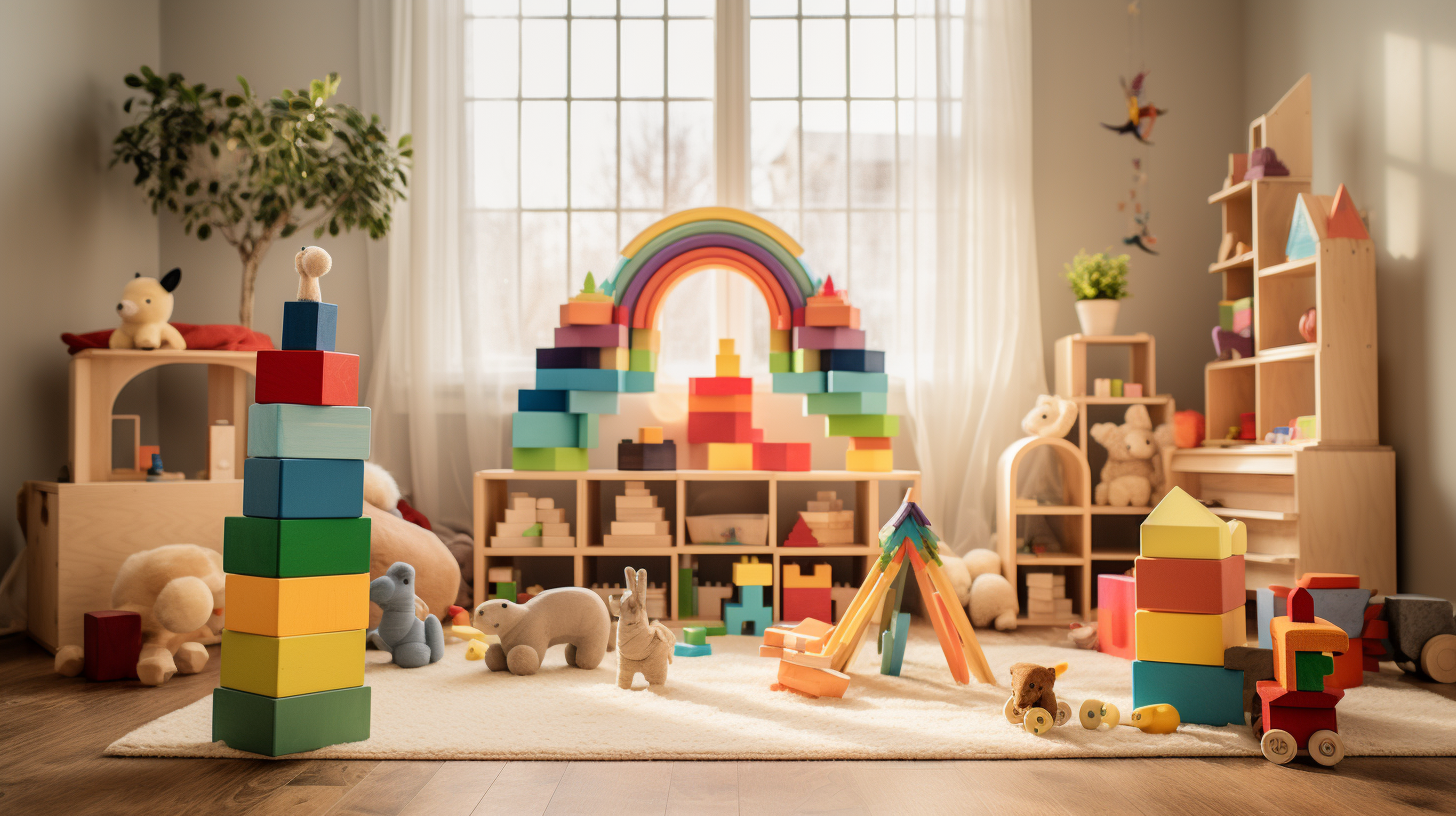
As a parent, I often find myself overwhelmed by the vast array of children’s toys available. However, I have recently discovered Waldorf toys and their profound impact on child development.
In this article, I will guide you through the philosophy behind Waldorf education and the benefits of these unique toys. We will explore how to choose age-appropriate options and incorporate natural materials into playtime.
Join me as we navigate the world of Waldorf toys and make informed choices for our children’s growth and imagination.
Key Takeaways
- Waldorf toys emphasize creativity, imagination, and holistic development in children.
- They are made from natural materials and have a simple design to encourage open-ended play and multiple uses.
- Waldorf toys promote cognitive development, problem-solving skills, and sensory exploration.
- Choosing age-appropriate Waldorf toys that match the child’s developmental stage and interests is important.
The Waldorf Education Philosophy
If you’re interested in learning about the Waldorf Education Philosophy, you’ll find that it places a strong emphasis on fostering creativity and imagination in children. The Waldorf education curriculum and teaching methods are designed to nurture and develop a child’s natural sense of wonder and curiosity.
In a Waldorf classroom, you won’t find textbooks or traditional teaching methods. Instead, teachers use storytelling, arts, and hands-on activities to engage students in their learning journey. The goal is to provide a holistic education that addresses the intellectual, emotional, and physical aspects of a child’s development.
By integrating academics with creative activities, such as painting, music, and movement, the Waldorf approach aims to cultivate well-rounded individuals who are capable of critical thinking, problem-solving, and self-expression.
Understanding the Waldorf Education Philosophy is essential when exploring the world of Waldorf toys, as these toys are designed to support and enhance the principles and values of this educational philosophy.
Understanding Waldorf Toys
You can gain a deeper understanding of Waldorf toys by exploring their unique characteristics and principles. These toys are carefully crafted to stimulate a child’s imagination and encourage open-ended play. They are made from natural materials such as wood, silk, and wool, reflecting the Waldorf philosophy of connecting children with the natural world. A key aspect of Waldorf toys is their simplicity, allowing children to use their creativity and imagination to bring them to life. Here is a table that highlights the main characteristics of Waldorf toys:
| Characteristics | Examples |
|---|---|
| Natural materials | Wooden blocks, silk scarves, woolen dolls |
| Simple design | Minimalistic shapes and colors |
| Open-ended play | Toys that can be used in multiple ways |
Understanding the unique characteristics of Waldorf toys can help in selecting toys that align with the principles of the Waldorf education philosophy and provide numerous benefits for a child’s development.
Benefits of Waldorf Toys for Child Development
Exploring the benefits of Waldorf toys can reveal their positive impact on a child’s development. Waldorf toys are designed to promote cognitive development and sensory exploration in children. Through open-ended play, these toys encourage imagination, problem-solving skills, and creativity. When children engage with Waldorf toys, they are encouraged to think critically, make decisions, and explore their surroundings. This type of play stimulates their cognitive abilities and helps them develop essential skills for learning and problem-solving later in life.
Additionally, Waldorf toys often incorporate natural materials and textures, allowing children to engage their senses and develop their fine motor skills. By providing children with opportunities for hands-on exploration and imaginative play, Waldorf toys support their overall development and foster a love for learning.
Transitioning into the subsequent section about choosing age-appropriate Waldorf toys, it is important to consider the developmental stage and interests of the child.
Choosing Age-Appropriate Waldorf Toys
When selecting age-appropriate Waldorf toys, consider the developmental stage and interests of your child. It is important to choose toys that challenge and engage your child at their current level of development. For infants and toddlers, choose toys that stimulate their senses and promote exploration, such as wooden rattles or soft fabric dolls.
Preschoolers benefit from toys that encourage imaginative play, like wooden blocks or dress-up clothes. As children grow older, they may enjoy more complex toys that promote problem-solving and creativity, such as building sets or art supplies.
By choosing the right toys for your child, you are providing them with opportunities to learn and grow in a way that is engaging and developmentally appropriate.
Transition: Now that we have discussed the importance of choosing age-appropriate Waldorf toys, let’s explore how these toys often incorporate natural materials.
Exploring Natural Materials in Waldorf Toys
As you consider age-appropriate Waldorf toys, you’ll notice that natural materials are often incorporated into their design. This intentional choice serves multiple purposes, including exploring sensory experiences and promoting eco consciousness.
Natural materials such as wood, silk, and wool are commonly used in Waldorf toys because they provide a rich tactile experience for children. The different textures, smells, and weights of these materials engage their senses and enhance their play.
Additionally, using natural materials aligns with the Waldorf philosophy of connecting children with the natural world and fostering an appreciation for the environment. By incorporating these materials into their toys, Waldorf promotes eco consciousness and encourages children to develop a deeper connection with nature.
Transitioning into the subsequent section about nurturing imagination with Waldorf toys, it is important to note that the use of natural materials also plays a vital role in stimulating imaginative play.
Nurturing Imagination With Waldorf Toys
Using natural materials in Waldorf toys fosters imaginative play and allows children to create their own worlds of wonder. When children engage in imaginative play, they are able to explore their creativity and develop important cognitive and social skills. Waldorf toys, made from materials such as wood, silk, and wool, provide a sensory experience that stimulates the imagination. These toys encourage open-ended play, where children are free to invent their own stories, characters, and scenarios. The simplicity and natural beauty of Waldorf toys also enhance the aesthetic experience, nurturing a sense of wonder and appreciation for the natural world. By providing children with the tools for imaginative play, Waldorf toys foster creativity and inspire a sense of joy and wonder in the world around them.
| Waldorf Toys | Benefits |
|---|---|
| Made from natural materials | Stimulates imagination |
| Encourages open-ended play | Develops creativity and cognitive skills |
| Enhances aesthetic experience | Fosters a sense of wonder and appreciation for the natural world |
| Inspires joy and wonder | Promotes social interaction and communication |
Nurturing creativity with Waldorf toys is essential for a child’s holistic development and lays the foundation for a lifelong love of learning and exploration.
Fostering Creativity With Waldorf Toys
When it comes to fostering creativity and imagination in children, open-ended play has numerous benefits.
Research has shown that open-ended play allows children to explore and experiment, promoting problem-solving skills and critical thinking.
Toys that encourage open-ended play, such as building blocks or art supplies, provide children with the opportunity to use their imagination and create their own narratives.
In contrast, electronic toys often limit children’s creativity by providing predetermined scenarios and outcomes, making Waldorf toys a better choice for promoting imagination.
Open-Ended Play Benefits
Children can develop creativity and problem-solving skills through open-ended play with Waldorf toys. This type of play allows children to explore, imagine, and create without limitations or specific instructions. Here are four benefits of open-ended play in early childhood and the importance of play in child development:
- Encourages imagination: Open-ended play with Waldorf toys stimulates a child’s imagination, as they are free to create their own stories and scenarios.
- Develops problem-solving skills: Children learn to think critically and find solutions to challenges during open-ended play, enhancing their problem-solving abilities.
- Fosters creativity: By providing children with the freedom to use their creativity, Waldorf toys allow them to express themselves and develop their unique ideas.
- Builds social skills: Open-ended play often involves collaboration and communication with others, helping children develop important social skills such as sharing, negotiating, and taking turns.
Promoting Imagination Through Toys
Playing with open-ended toys can spark a child’s imagination and encourage creative thinking. These toys, such as building blocks, art supplies, and pretend play sets, provide endless possibilities for children to explore and create.
Research shows that encouraging creativity and fostering imagination through play has numerous benefits for children’s development. It helps them develop problem-solving skills, enhances their cognitive abilities, and promotes self-expression.
Open-ended toys also allow children to take on different roles and engage in imaginative play, which supports their social and emotional development.
By providing children with the opportunity to use their imagination and be creative, we are setting the foundation for their future success.
Transitioning into the subsequent section about ‘waldorf toys vs electronics,’ it is important to consider how different types of toys impact a child’s imagination and creativity.
Waldorf Toys Vs Electronics
In today’s digital age, it’s important to consider the impact of electronics on a child’s ability to imagine and be creative. When it comes to choosing toys for children, the debate between Waldorf toys and traditional electronic toys often arises.
Here are some key points to consider:
- Waldorf toys promote open-ended play and encourage children to use their imagination.
- Traditional electronic toys often have predetermined functions and limit creativity.
- Waldorf toys are made from natural materials and have a tactile and sensory appeal.
- Electronic toys can provide educational benefits and interactive experiences.
Research shows that children benefit from a balance between different types of toys. While electronic toys can offer educational value, it is crucial to also incorporate Waldorf toys to foster imagination and creativity.
Encouraging Open-Ended Play With Waldorf Toys
When it comes to encouraging open-ended play with Waldorf toys, you’ll find that the possibilities are endless. Waldorf toys are designed to promote independent play and stimulate a child’s imagination. These toys are often made from natural materials such as wood, silk, and wool, providing a sensory experience that engages multiple senses. By engaging in open-ended play, children have the freedom to explore and create their own narratives, fostering creativity and problem-solving skills.
Here is a table showcasing some examples of Waldorf toys for sensory play and how they promote independent play:
| Toy | Description |
|---|---|
| Wooden Blocks | Allows children to build and construct various structures, encouraging spatial awareness and fine motor skills. |
| Silk Scarves | Can be used for dress-up, dancing, and imaginative play, promoting creativity and self-expression. |
| Play Kitchen | Provides opportunities for pretend cooking and role-playing, enhancing social skills and storytelling abilities. |
| Knitted Animals | Offers a soft and cuddly companion for imaginative play, encouraging empathy and emotional development. |
Incorporating Waldorf Toys in Daily Routines
As a parent, I’ve discovered the numerous benefits of incorporating Waldorf toys into my child’s daily routines. These toys foster creativity and imagination, promoting open-ended play. This type of play allows children to develop problem-solving skills and critical thinking abilities. By integrating these toys into our daily routines, we’ve witnessed how they enhance our child’s cognitive, emotional, and social development.
We incorporate play-based learning activities during mealtime or bedtime, for example. This way, our child gets to engage with the toys while also learning and having fun. The Waldorf toys provide a unique and enriching experience for our child, allowing them to explore their imagination and learn through play. It’s amazing to see how these toys can have such a positive impact on our child’s development.
Benefits of Waldorf Toys
You’ll love the many benefits that Waldorf toys provide for your child’s development. Waldorf toys are designed to promote cognitive development and sensory exploration in children. These toys are carefully crafted using natural materials such as wood, cotton, and wool, which engage children’s senses and encourage them to explore the world around them. The open-ended nature of Waldorf toys allows children to use their imagination and creativity, leading to enhanced cognitive skills. Through play with these toys, children develop problem-solving abilities, critical thinking skills, and learn to make connections between objects and ideas. Additionally, the tactile nature of Waldorf toys stimulates sensory exploration, helping children to develop their fine motor skills and hand-eye coordination. With Waldorf toys, your child’s development will be nurtured in a holistic and engaging way.
| Benefits of Waldorf Toys |
|---|
| Promote cognitive development |
| Encourage sensory exploration |
| Foster imagination and creativity |
| Develop problem-solving abilities |
| Stimulate fine motor skills |
Introducing your child to Waldorf toys is just the beginning of their journey into play-based learning activities.
Play-Based Learning Activities
Now that we’ve explored the benefits of Waldorf toys, let’s dive into the world of play-based learning activities.
One of the core principles of Waldorf education is that children learn best through play. Play-based learning allows children to engage in hands-on activities that stimulate their creativity, problem-solving skills, and imagination.
In Waldorf-inspired play-based learning, children are encouraged to explore and discover the world around them through open-ended activities. These activities can include building with blocks, creating art with natural materials, storytelling, and imaginative play. By engaging in these hands-on activities, children develop their cognitive, social, and emotional skills.
By integrating play-based learning activities into our children’s daily routines, we provide them with opportunities to learn and grow in a natural and holistic way.
Integrating Toys Into Routines
To seamlessly integrate these play-based learning activities into your daily routines, consider setting aside dedicated time each day for your child to engage in hands-on exploration and creative play. By incorporating toys into your child’s daily routines, you can enhance their learning experiences and support their overall development. Here is a table showcasing some ways to integrate toys into different daily routines:
| Daily Routine | Integrating Toys |
|---|---|
| Mealtime | Use pretend food and kitchen sets for imaginative play |
| Bath Time | Provide bath toys that encourage sensory exploration |
| Bedtime | Use soft toys for comfort and storytelling |
| Outdoor Play | Offer outdoor toys like balls and bikes for active play |
| Quiet Time | Provide puzzles, building blocks, and quiet play materials |
Supporting Social Skills With Waldorf Toys
Waldorf toys can help children develop strong social skills through imaginative play. These toys are designed to encourage open-ended play, allowing children to express themselves and interact with others.
By engaging in pretend play scenarios, children can practice and improve their communication skills, such as taking turns, sharing ideas, and negotiating roles. This type of play also enhances social interaction as children learn to collaborate, compromise, and problem-solve together.
Research has shown that children who engage in imaginative play with Waldorf toys demonstrate improved social competence and empathy towards others.
As parents, it is important to provide a balance between screen time and play with Waldorf toys. Transitioning from screen time to engaging with tactile, imaginative toys can foster creativity, social skills, and overall well-being in children.
Balancing Screen Time With Waldorf Toys
Finding a balance between screen time and playtime with Waldorf toys can be challenging, but it’s essential for your child’s development. Waldorf toys offer unique opportunities for cognitive development and sensory exploration.
Here are three key benefits of incorporating Waldorf toys into your child’s playtime:
- Encourages imagination and creativity: Waldorf toys, with their simple and open-ended designs, allow children to use their imagination and create their own narratives. This promotes cognitive development as they learn to think critically and problem-solve.
- Stimulates sensory exploration: Waldorf toys are often made from natural materials like wood, silk, and wool, which provide different textures and sensations. This encourages children to engage their senses and develop their sensory perception skills.
- Fosters holistic play: Waldorf toys prioritize holistic play that engages the whole child, including their physical, emotional, and intellectual development. This approach promotes a well-rounded and balanced development.
By finding the right balance between screen time and playtime with Waldorf toys, you can provide your child with opportunities for cognitive development and sensory exploration.
Now, let’s explore how to create a Waldorf-inspired play space for your child without overwhelming them with too many options.
Creating a Waldorf-Inspired Play Space
After finding the right balance between screen time and Waldorf toys, the next step is to create a Waldorf-inspired play space for your child. This space should be designed to be calming and nurturing, allowing your child to engage in imaginative play and foster their creativity. One way to achieve this is through the use of Waldorf-inspired decor. Incorporating natural materials such as wood, wool, and cotton can help create a warm and inviting atmosphere. Additionally, adding soft lighting and gentle colors can further enhance the calming environment. To help you visualize this, here is a simple table showcasing some key elements of a Waldorf-inspired play space:
| Element | Description | Example |
|---|---|---|
| Natural Materials | Use organic, sustainable materials | Wooden toys, woolen rugs |
| Soft Lighting | Create a warm and cozy atmosphere | Dimmable lamps, fairy lights |
| Gentle Colors | Choose soothing and muted tones | Earthy tones, pastel colors |
Connecting With Nature Through Waldorf Toys
To fully immerse yourself in nature and foster a connection with the environment, consider incorporating Waldorf-inspired toys into your child’s playtime. These toys are designed to promote a sense of wonder and awe for the natural world, encouraging children to engage with their surroundings in a meaningful way.
Waldorf toys often feature natural materials such as wood, silk, and wool, providing a sensory experience that is in harmony with nature. By engaging in sensory play with these toys, children can develop a deeper appreciation for the textures, smells, and sounds of the natural world. This type of play also allows them to explore and understand their own bodies and emotions in relation to the environment.
As we delve into the longevity and durability of Waldorf toys, we will discover how they are built to withstand the test of time and provide endless opportunities for imaginative play.
Longevity and Durability of Waldorf Toys
When it comes to Waldorf toys, two key factors contribute to their longevity and durability: quality assurance and lifespan, as well as the use of sustainable materials and construction.
Quality assurance ensures that each toy is made to the highest standards, with attention to detail and craftsmanship. This not only ensures that the toys will last a long time, but also provides peace of mind for parents knowing that their children are playing with safe and well-made toys.
In addition to quality, the use of sustainable materials and construction methods further enhances the lifespan of Waldorf toys. They are designed to be environmentally friendly and withstand the test of time.
Quality Assurance and Lifespan
Parents often wonder how long Waldorf toys will last and if they are built to withstand years of play. As a parent myself, I understand the importance of quality control and toy safety. When it comes to Waldorf toys, rest assured that these factors are taken seriously.
- Quality Control: Waldorf toy manufacturers have rigorous quality control measures in place to ensure that every toy meets the highest standards. This includes thorough testing for durability and safety.
- Toy Safety: Waldorf toys are made with non-toxic materials and do not contain any harmful chemicals. They are designed to be safe for children of all ages, with no small parts that could pose a choking hazard.
- Lifespan: Due to their high-quality craftsmanship and durable materials, Waldorf toys are built to last. They are designed to withstand years of play and can be passed down from generation to generation.
With a focus on quality assurance and toy safety, Waldorf toys are built to last and provide children with endless hours of imaginative play.
Now let’s explore the next section on sustainable materials and construction.
Sustainable Materials and Construction
In addition to considering the quality and lifespan of Waldorf toys, it is important to also assess their environmental impact. As a conscious consumer, I strive to choose eco-friendly alternatives whenever possible. Thankfully, many Waldorf toys are made from sustainable materials and constructed in an environmentally friendly manner.
To illustrate this point, I have created a table that showcases some common materials used in Waldorf toys and their eco-friendly alternatives:
| Common Material | Eco-Friendly Alternative |
|---|---|
| Plastic | Plant-based bioplastics |
| Synthetic fibers | Organic cotton |
| Particle board | Solid wood |
Frequently Asked Questions
How Can I Incorporate Waldorf Toys Into My Child’s Daily Routine?
I can incorporate Waldorf toys into my child’s daily routine by setting aside dedicated playtime, encouraging open-ended play, and providing a variety of natural materials. This type of play promotes creativity, imagination, and problem-solving skills.
What Are Some Tips for Balancing Screen Time With Waldorf Toys?
Balancing screen time with Waldorf toys can be challenging, but setting boundaries and encouraging imaginative play are key. Limiting screen time to specific hours and providing engaging, open-ended toys can help create a healthy balance.
How Can I Create a Waldorf-Inspired Play Space for My Child?
To create a Waldorf-inspired play space for my child, I would focus on natural materials, open-ended toys, and a calm, uncluttered environment. Incorporating elements of nature and simplicity can enhance their imaginative play and foster a sense of wonder.
How Do Waldorf Toys Support the Development of Social Skills in Children?
Waldorf toys foster imaginative play and the development of emotional intelligence in children. Through symbolic play, children learn to navigate social interactions, understand emotions, and develop empathy.
What Are Some Ways to Connect With Nature Through Waldorf Toys?
Connecting with nature through Waldorf toys can be achieved by incorporating elements such as natural materials, textures, and colors. These toys encourage sensory exploration, fostering a deeper connection with the natural world and promoting a sense of wonder and curiosity.
Conclusion
In conclusion, as I’ve delved into the world of Waldorf toys, I’ve discovered the magic they hold in nurturing a child’s imagination and creativity.
Like seeds planted in a fertile garden, these toys provide the fertile ground for children to grow and blossom into their true selves.
With their natural materials and timeless designs, Waldorf toys stand the test of time, ensuring that they’ll continue to bring joy and wonder to generations to come.
So let’s embrace these enchanting toys and watch our children’s minds soar to new heights.
Mila, a gifted writer with a heart brimming with enthusiasm for child development and playful learning, is the creative force behind the enchanting narratives and insightful articles that grace Toddler Ride On Toys. With a background in early childhood education and a genuine passion for nurturing young minds, Mila weaves words that captivate, educate, and inspire parents, caregivers, and educators.
-
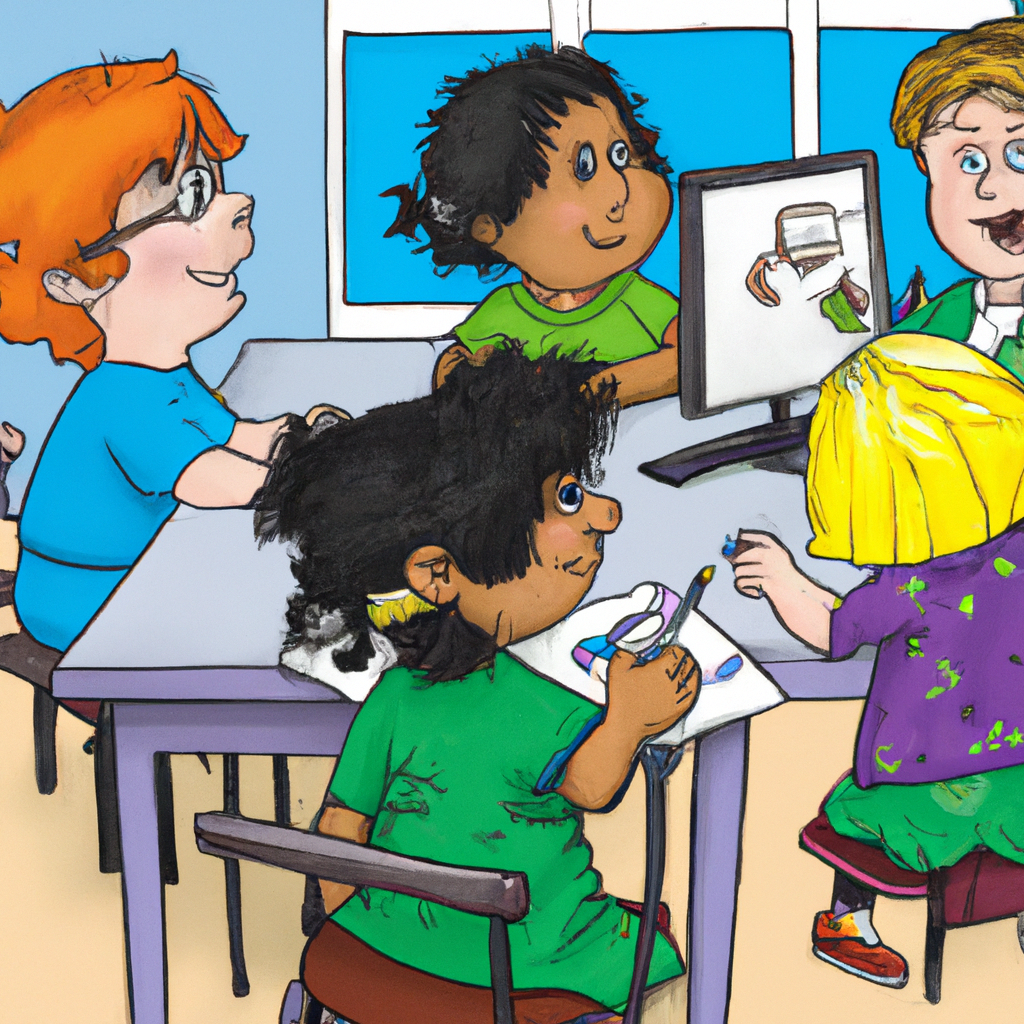
 Child Development3 months ago
Child Development3 months agoWhat Is a Theory in Child Development
-

 Child Development3 months ago
Child Development3 months agoThe Science Behind How Parents Affect Child Development
-
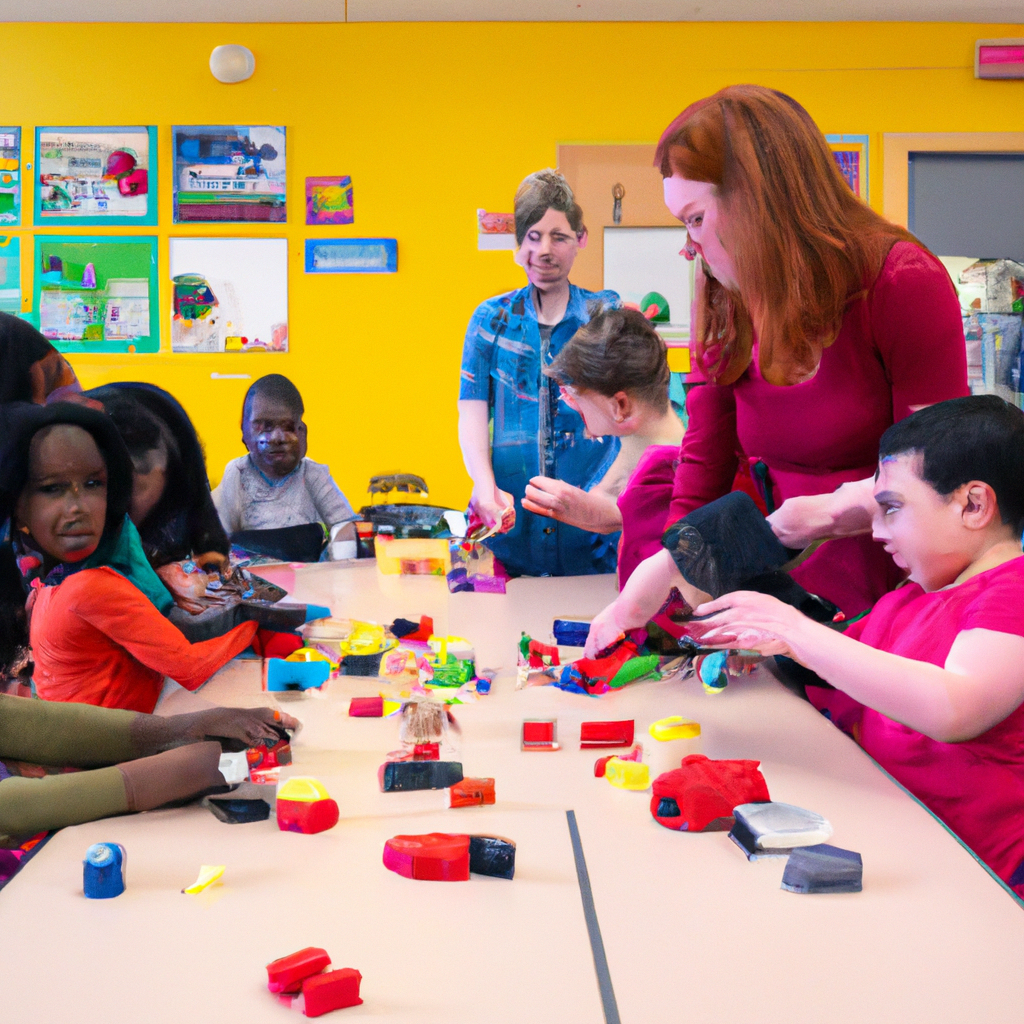
 Child Development3 months ago
Child Development3 months agoWhat Do You Do in Child Development Class in High School
-
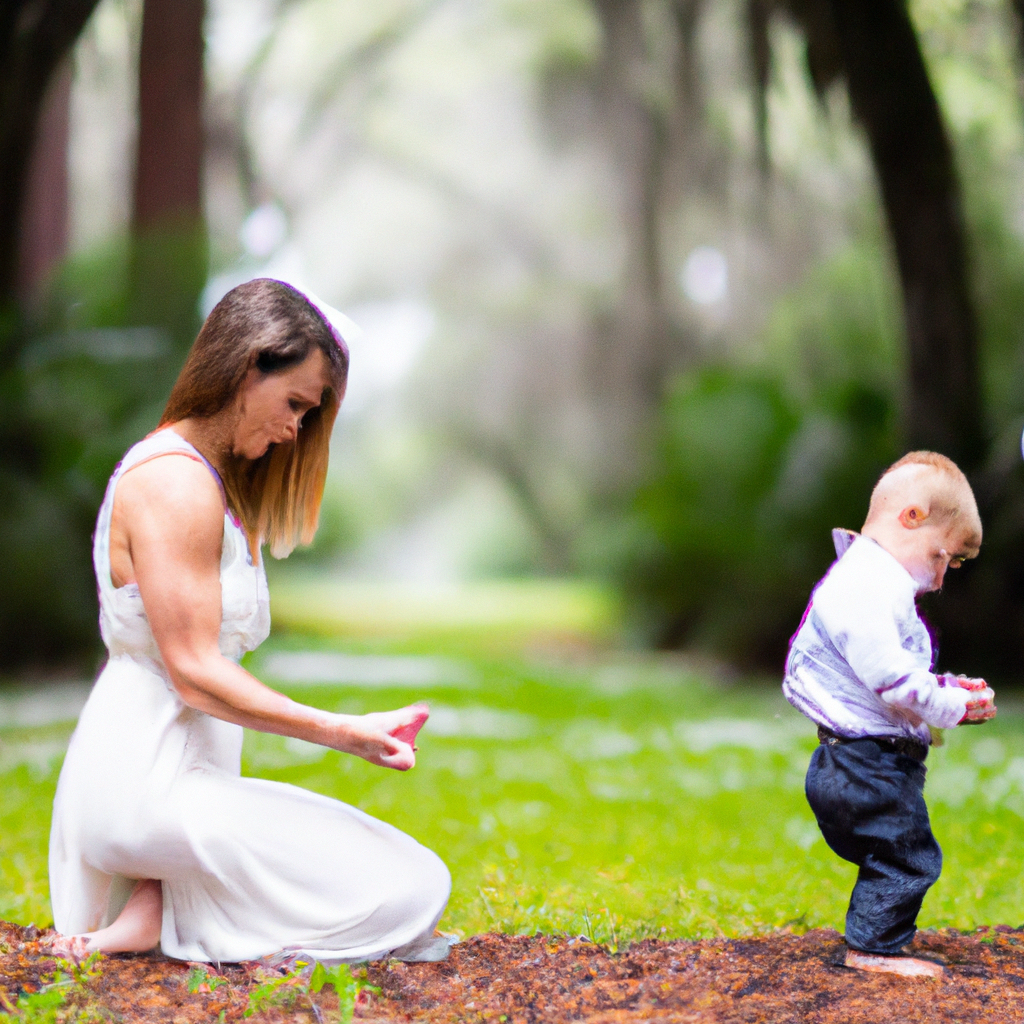
 Child Development3 months ago
Child Development3 months agoHow Parenting Styles Affect Child Development
-
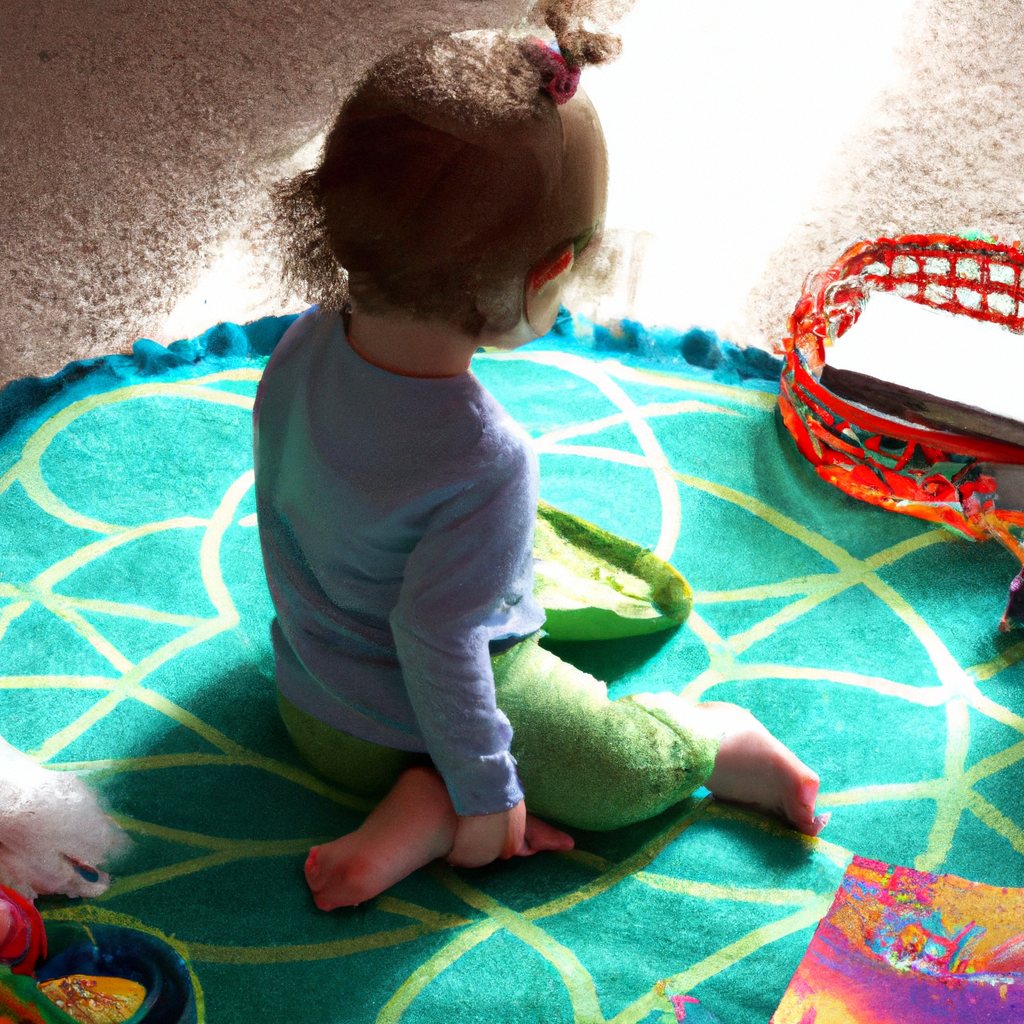
 Child Development3 months ago
Child Development3 months agoWhat Is Child Development?
-
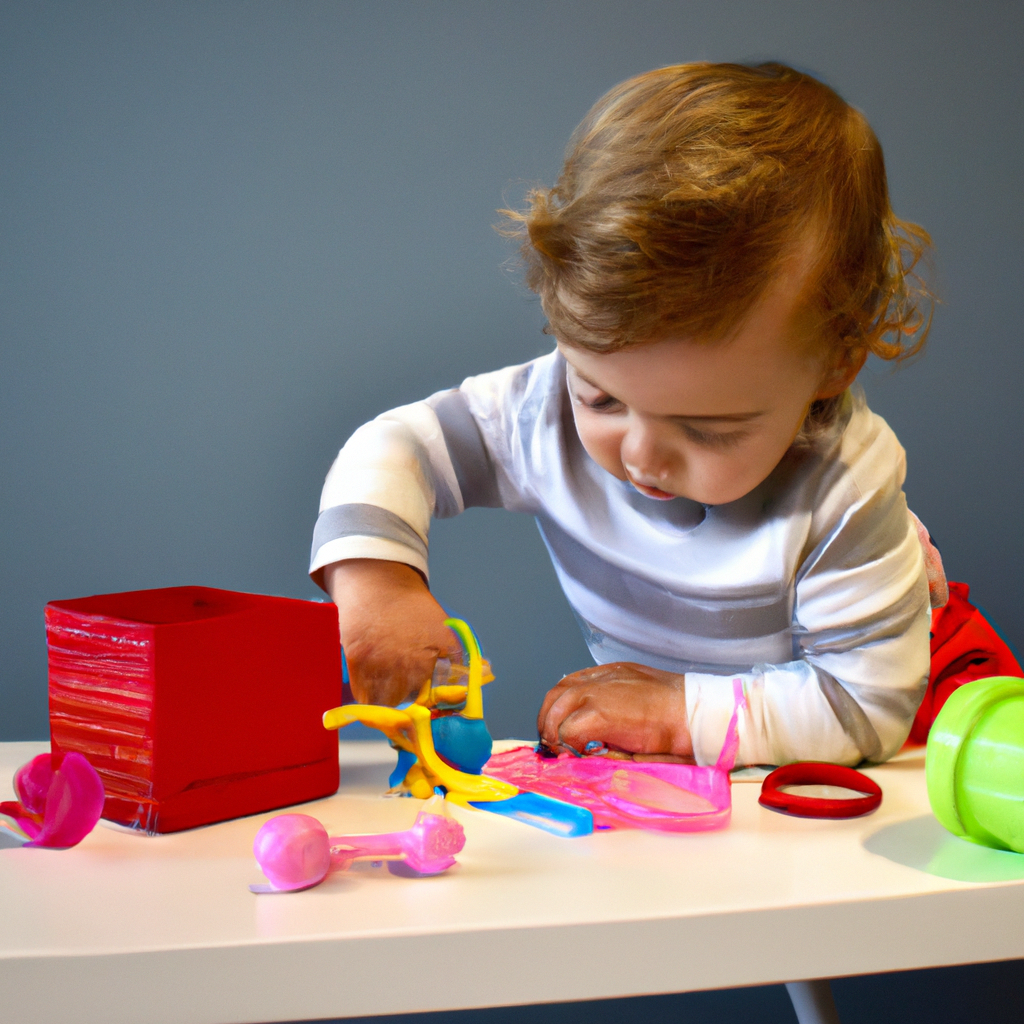
 Child Development3 months ago
Child Development3 months agoHow Does Piaget’s Theory Impact Child Development
-

 Preschool Toys6 months ago
Preschool Toys6 months agoTop 8 Interactive Role-Play Toys for Preschoolers Reviewed
-

 Child Development3 months ago
Child Development3 months agoHow Does Food Insecurity Affect Child Development



